June #5: Electric Boogaloo
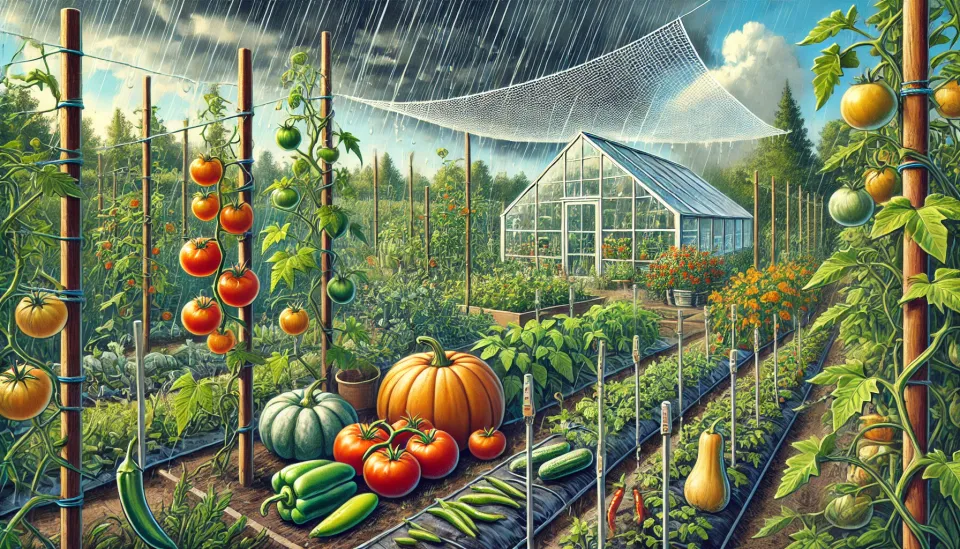
Let’s start this month with some “I told myself so.” Last month, I set up some hail netting in a panic, and at the beginning of June, I was really glad I did. We had a major thunderstorm with small but dense hail. It's fairly common to have thunderstorms at this time of year here, but this year they are quite sudden and strong. During this month, we had two extreme weather warnings, and for the first time in my life, a tornado warning. This was quite scary because I was right in the predicted path of a few supercells. Thankfully, nothing happened except for some minor flooding in the back of my garden and some bent potatoes.
The rainy and humid weather creates great conditions for picking mushrooms. I went for a quick walk around my secret spot and sure enough—a basket full of penny buns!
Last time, I promised the timelapse of this year's Micro-Tom tomatoes. So without further ado, here it is!
When planting those tomatoes, I thought I had some spare Micro-Tom plants and planted them a few days into the timelapse, but one of the plants turned out to be something else. I don’t know what it is because I used seeds from my winter HydroHALLBAR experiment. I’ve decided to take this as an opportunity to try something weed growers are very familiar with—low-stress training. I bent the plant and anchored it to a stick. I plan to lead it outside of the small greenhouse and trellis it to my window frame.
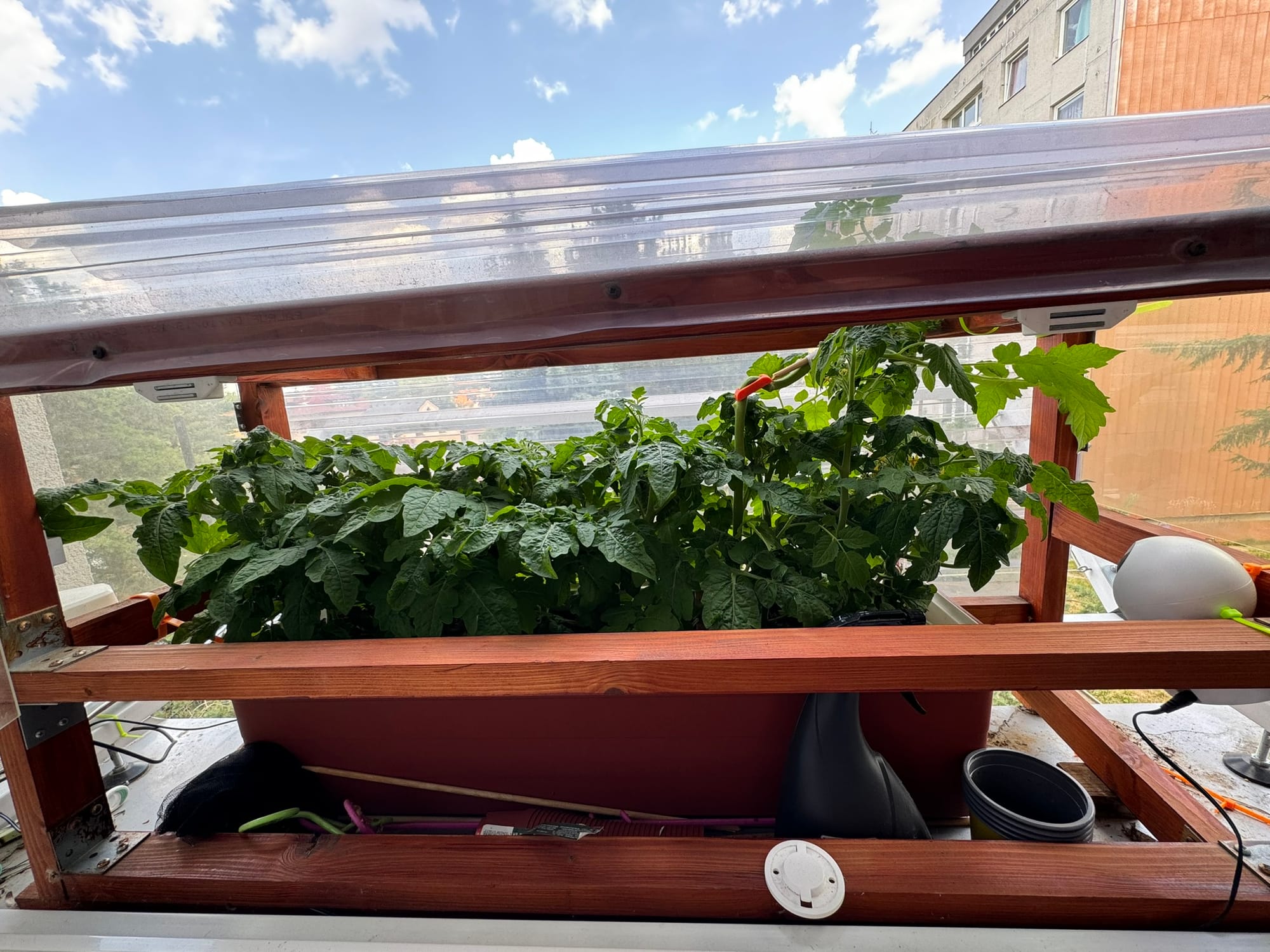
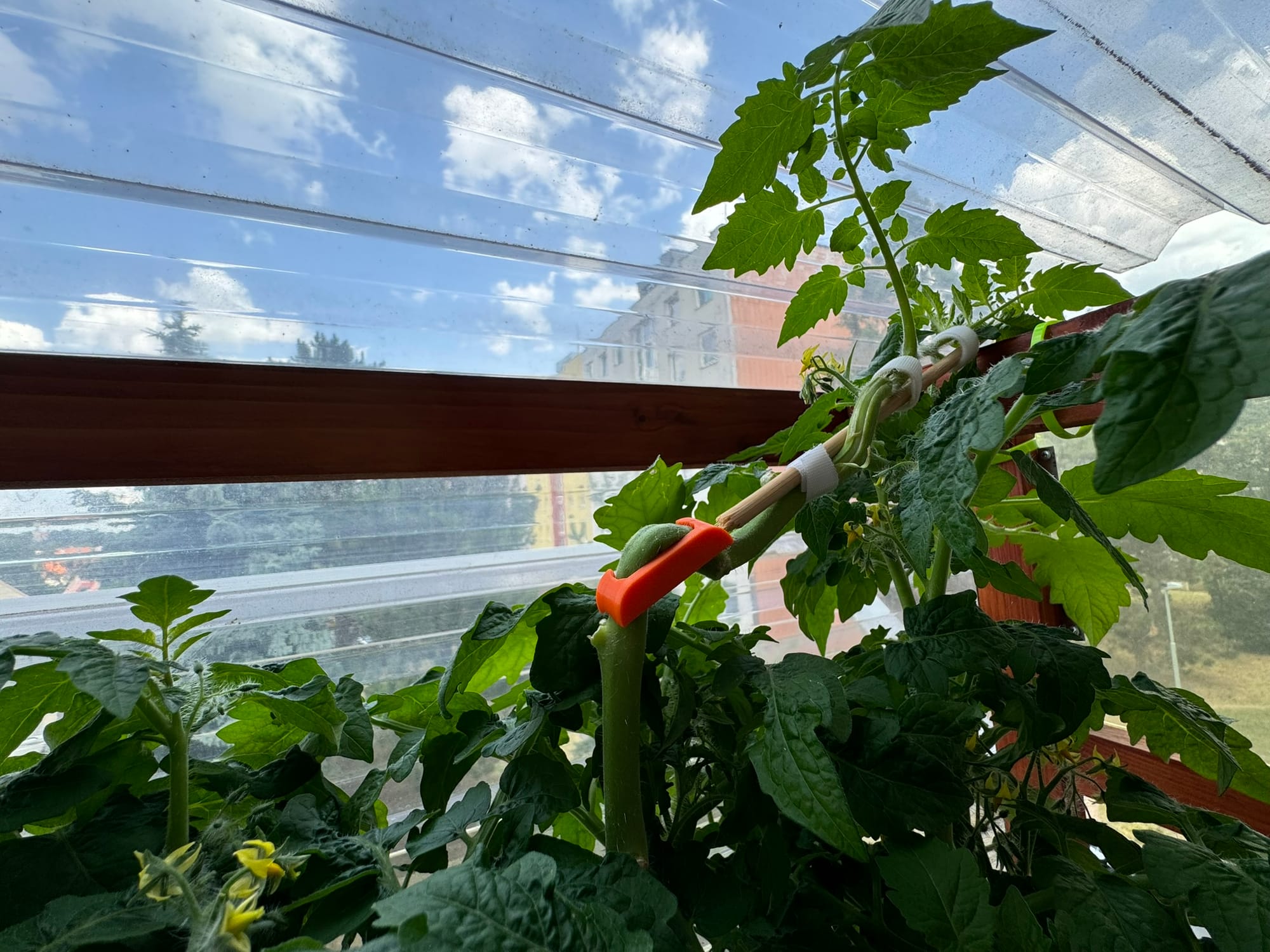
the sun field
I have never grown pumpkins in my life before, which is probably the reason I messed up the spacing so much. My butternut squash and Sweet Meat Oregon homesteads have exploded in foliage. This is actually what I wanted because it looks beautiful and I really like how it covers the whole bed. But now, I have to let them out of the bed because there is not much space for all the plants, and I hope the melons won’t have to compete for space with them.
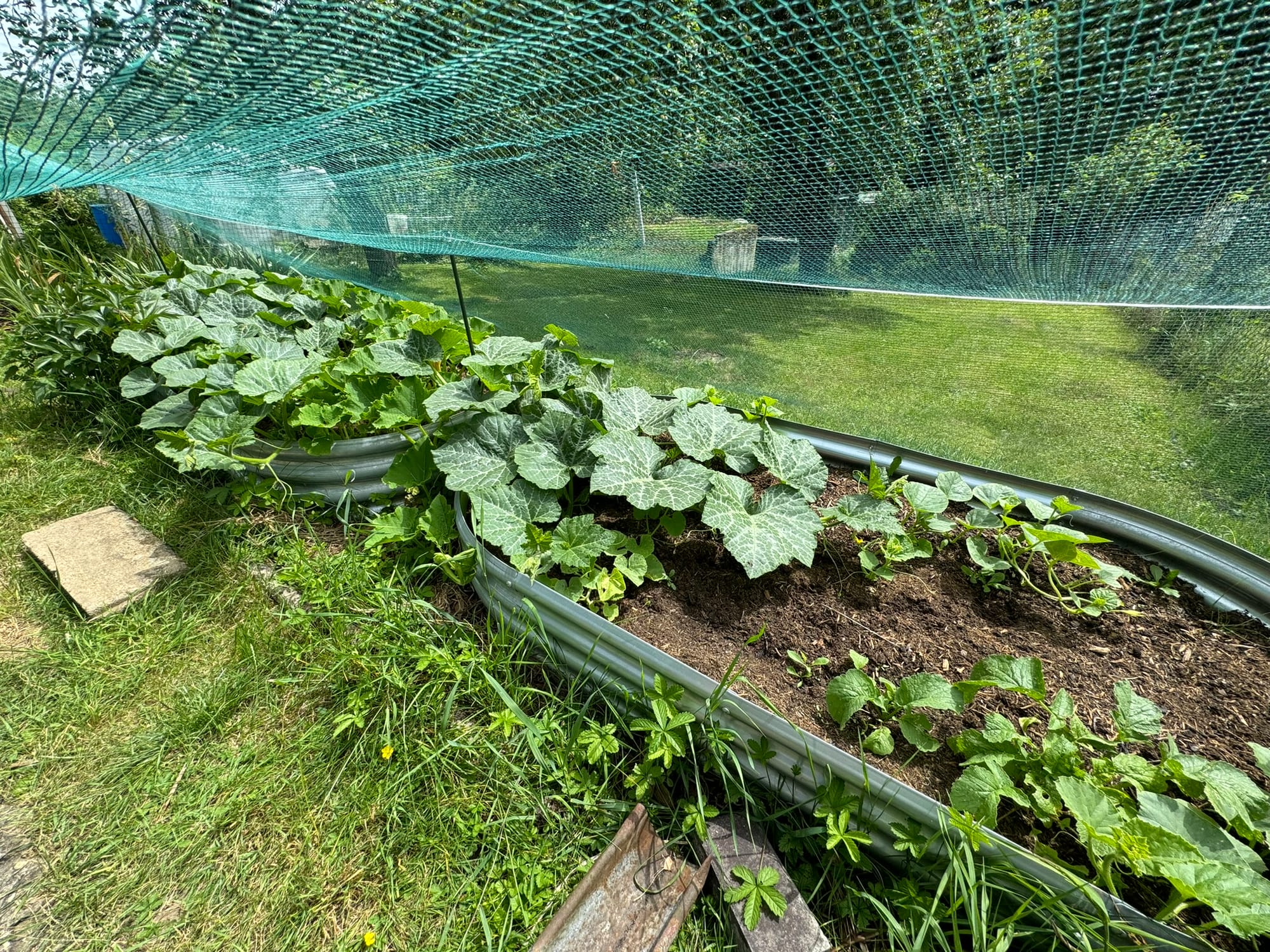
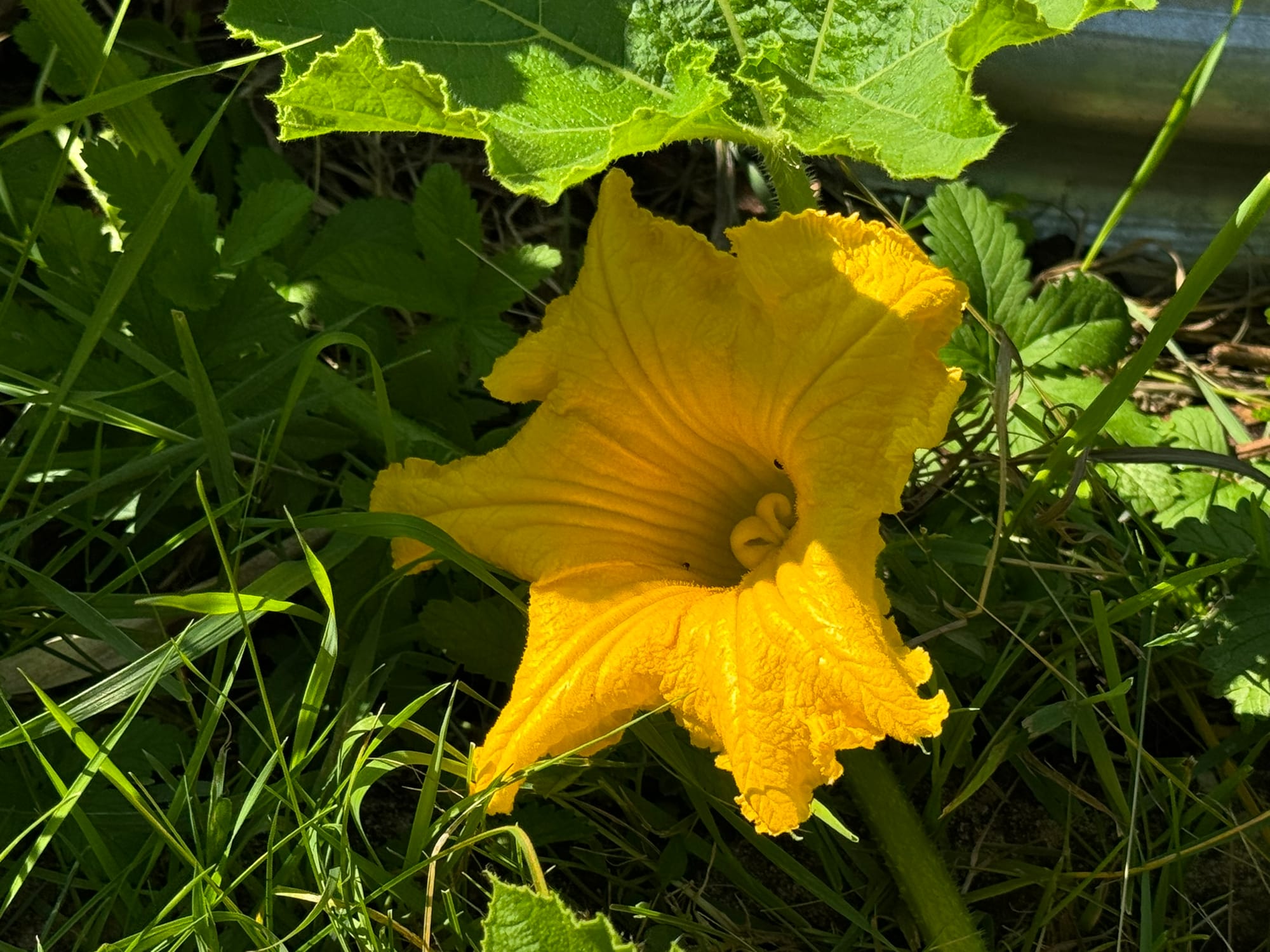
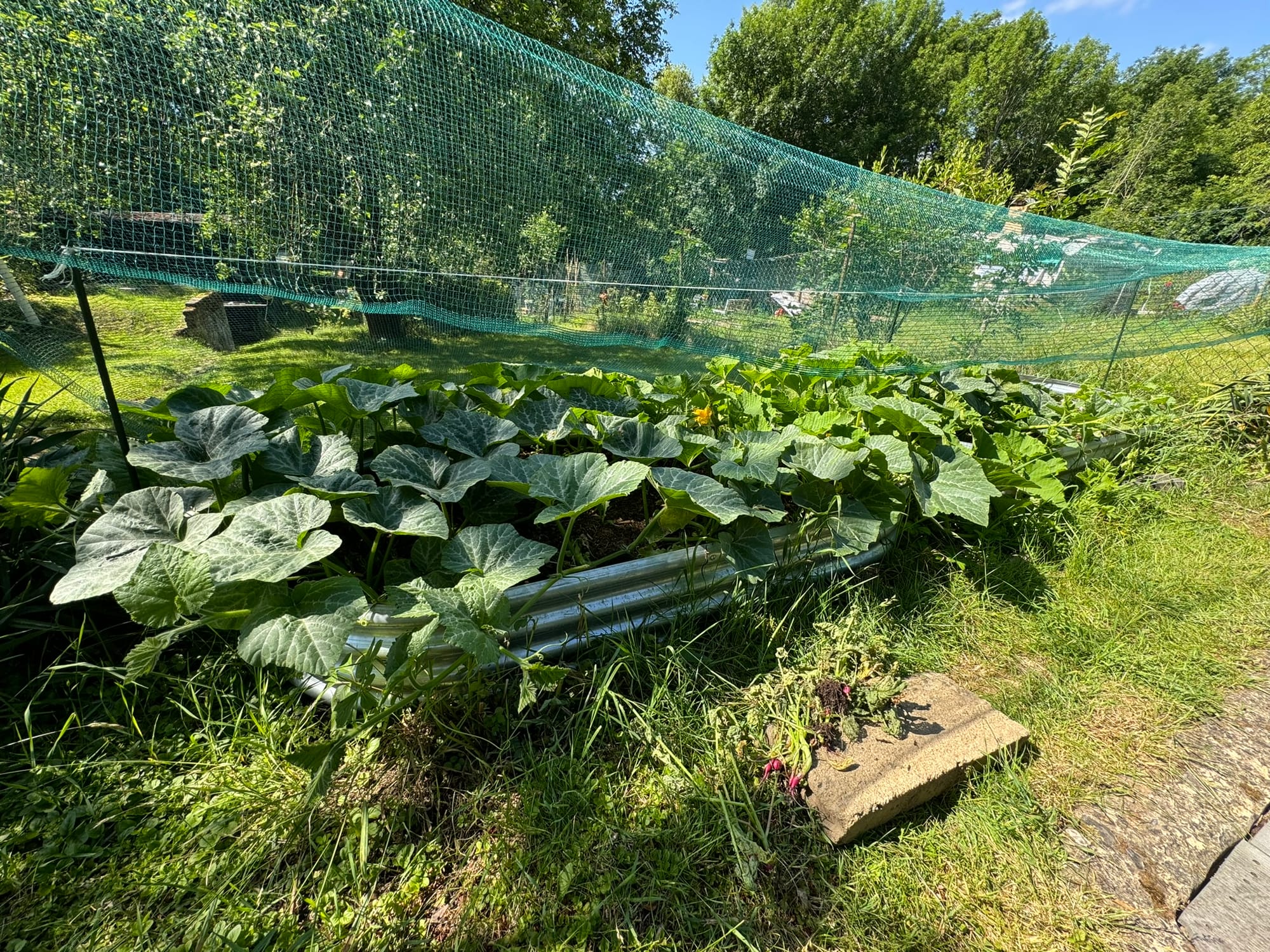
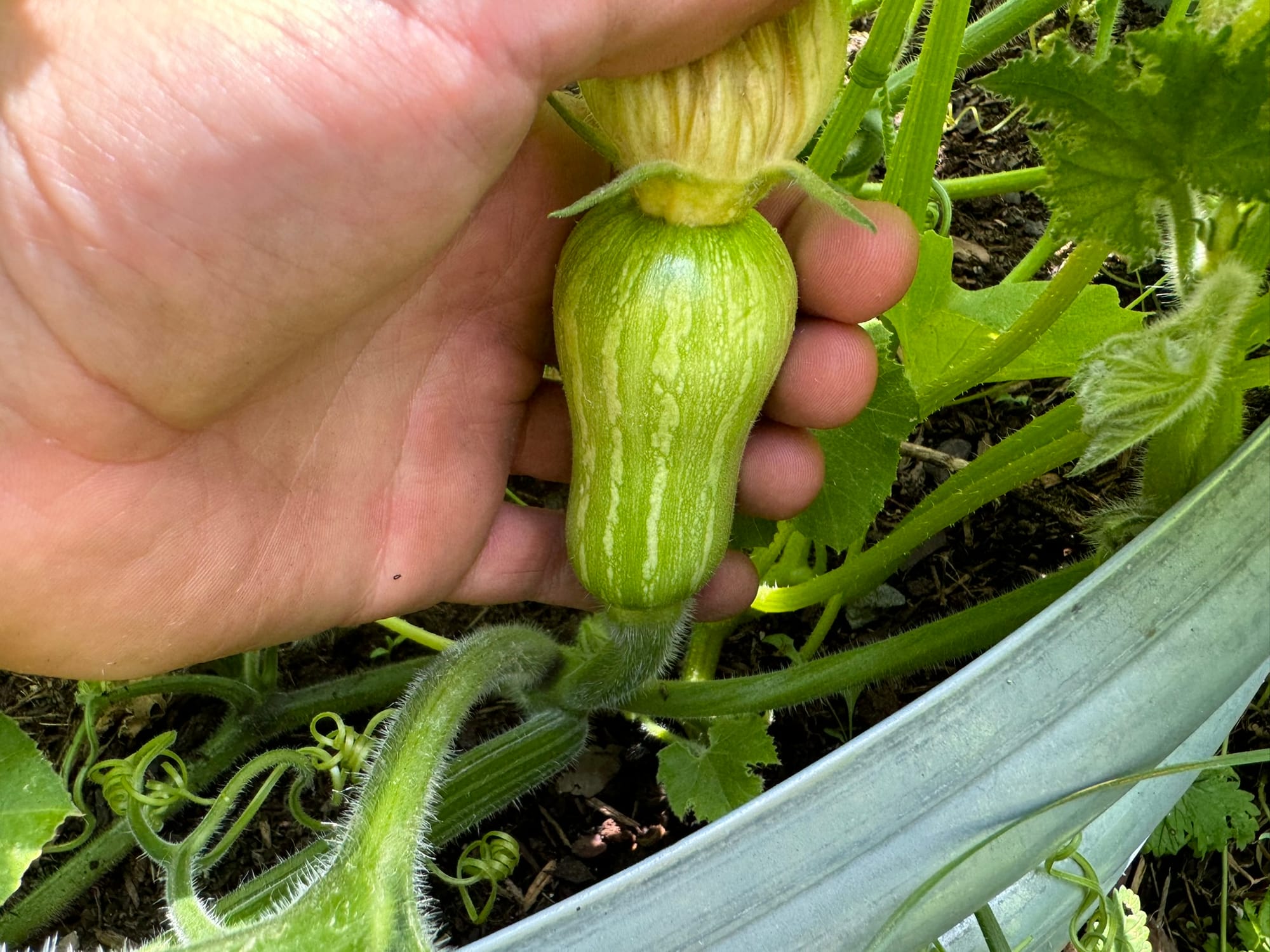
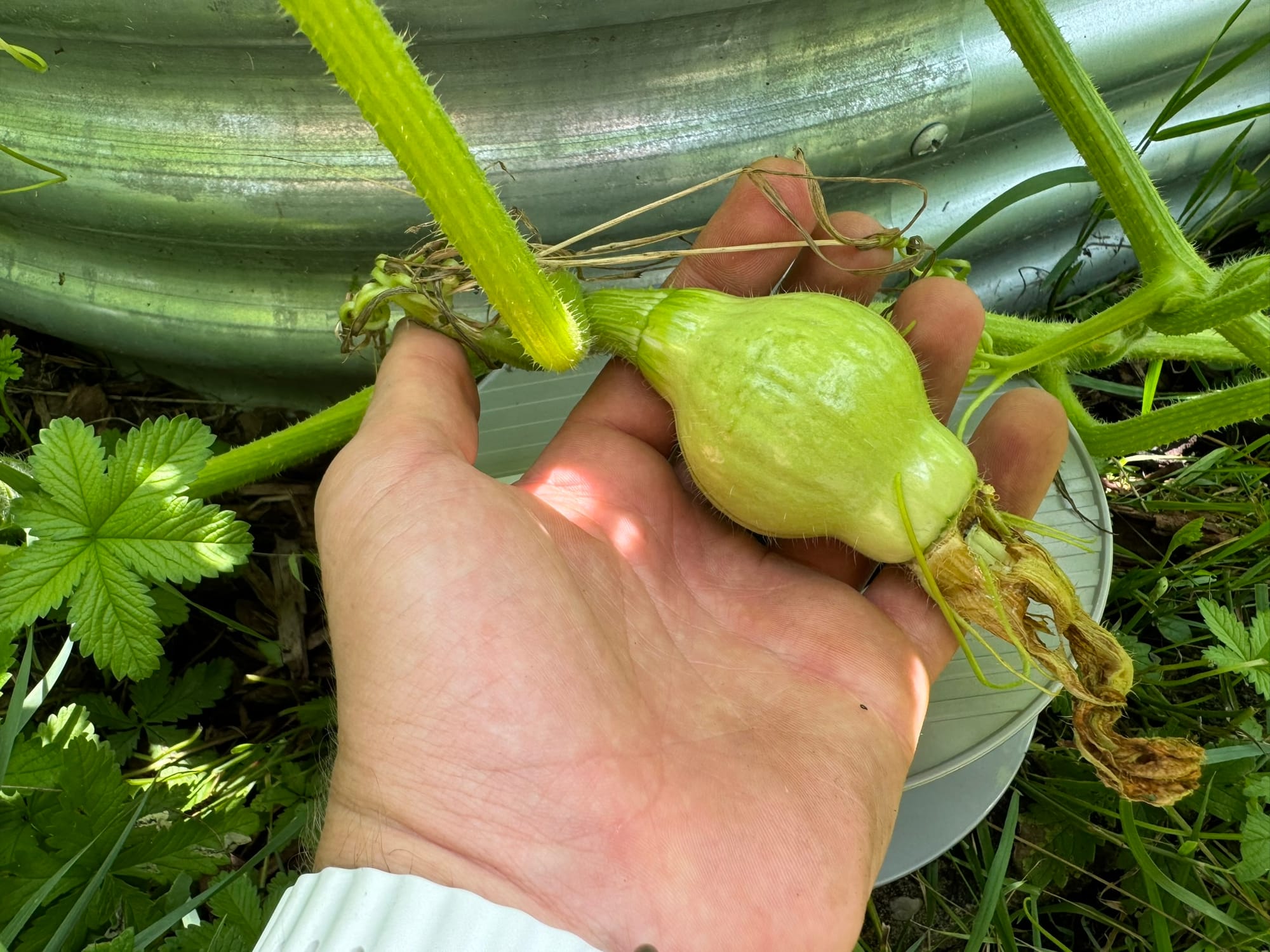
I have finished fitting my soil tomatoes with the automatic grow spike irrigation. I left a few plants to dry out to see the dispersion radius of the water, and I am quite happy to see the roots crawl around the spike.
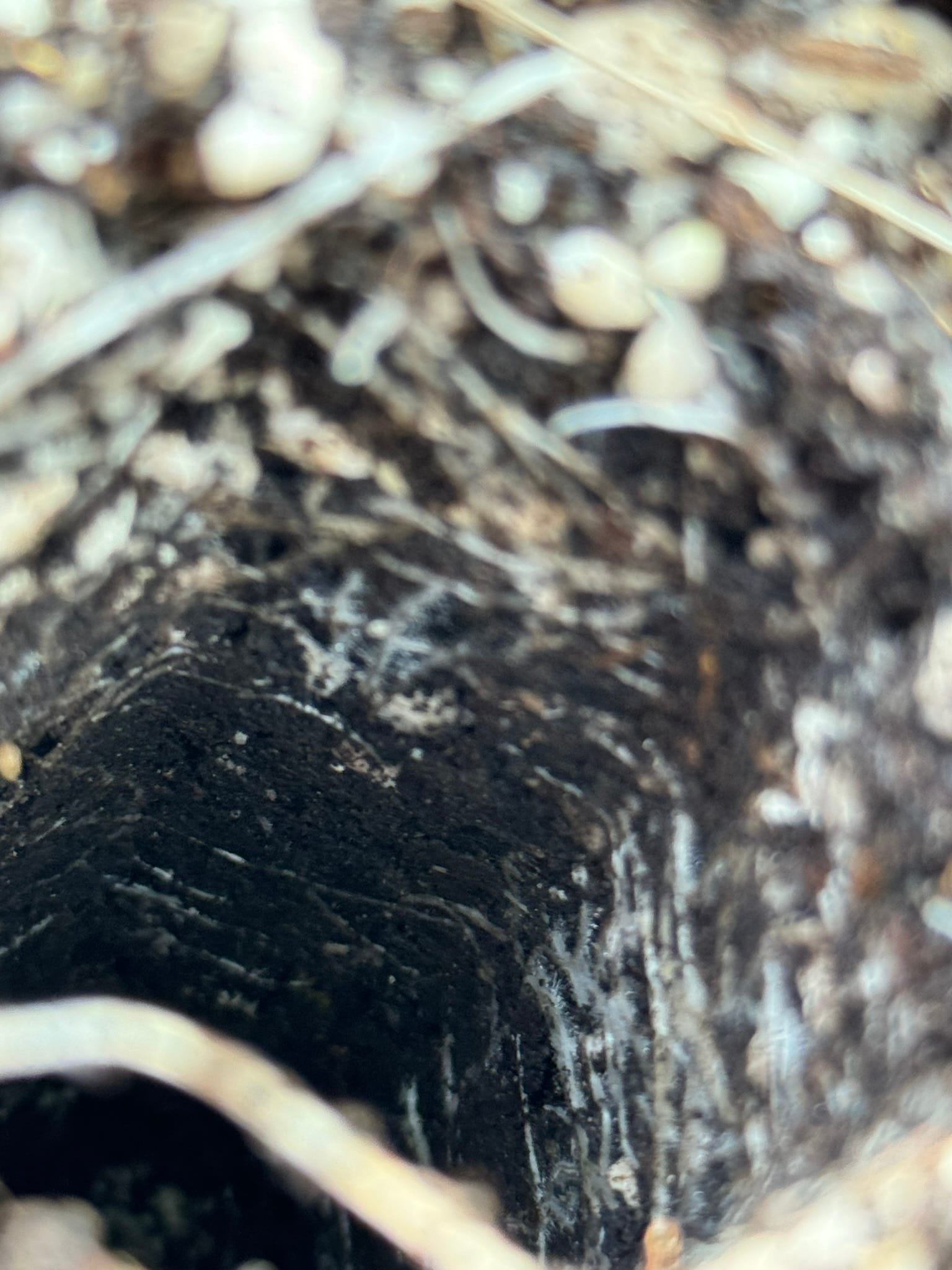
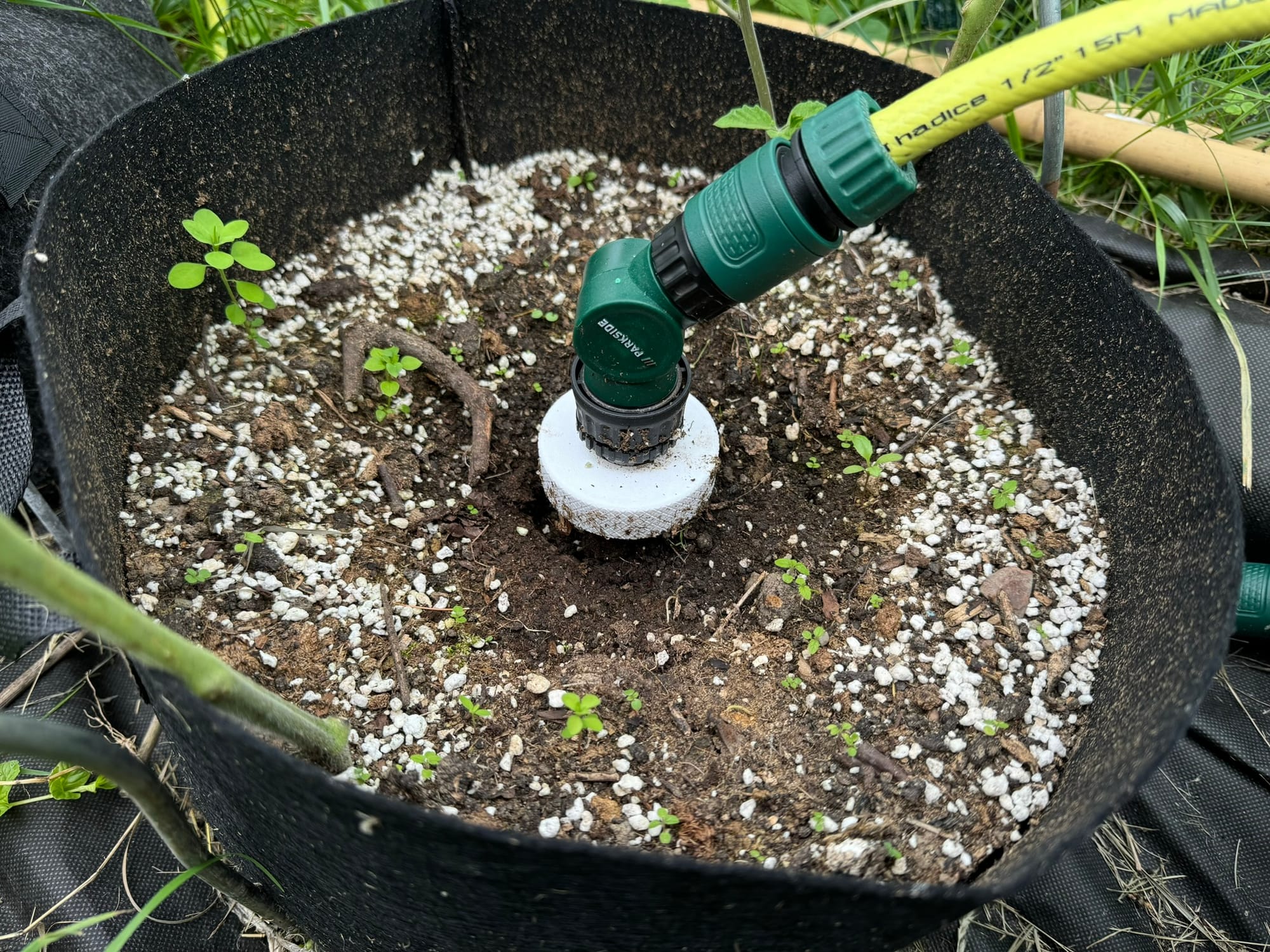
The tomatoes are really in love with the spot so far. I was a bit scared of the high noon sun burning the leaves, so I tried to cover them a little bit with a curtain as a shade cloth. But once I put the hail netting on, I figured out the net provides some degree of shade as well and removed those curtains.
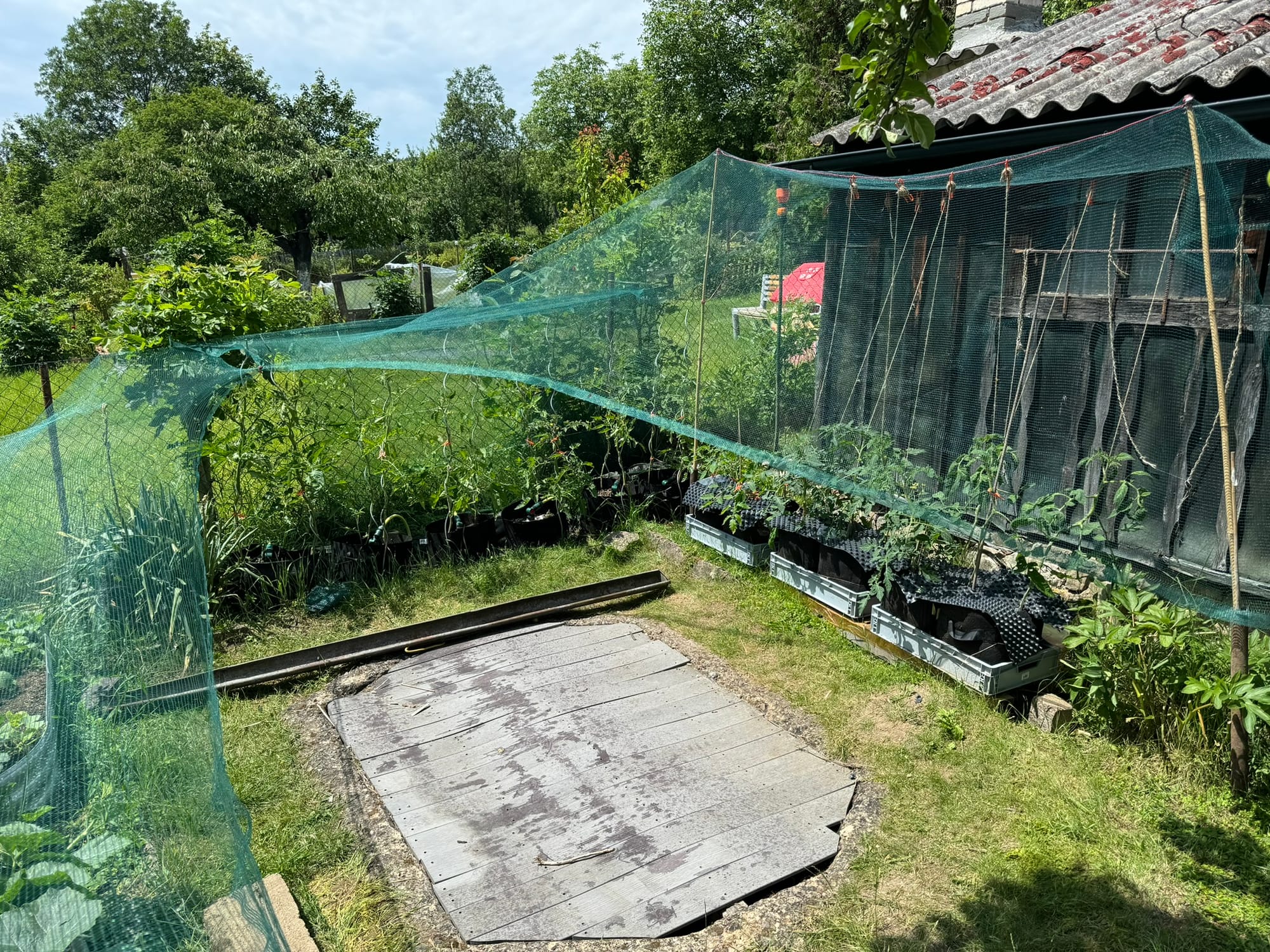
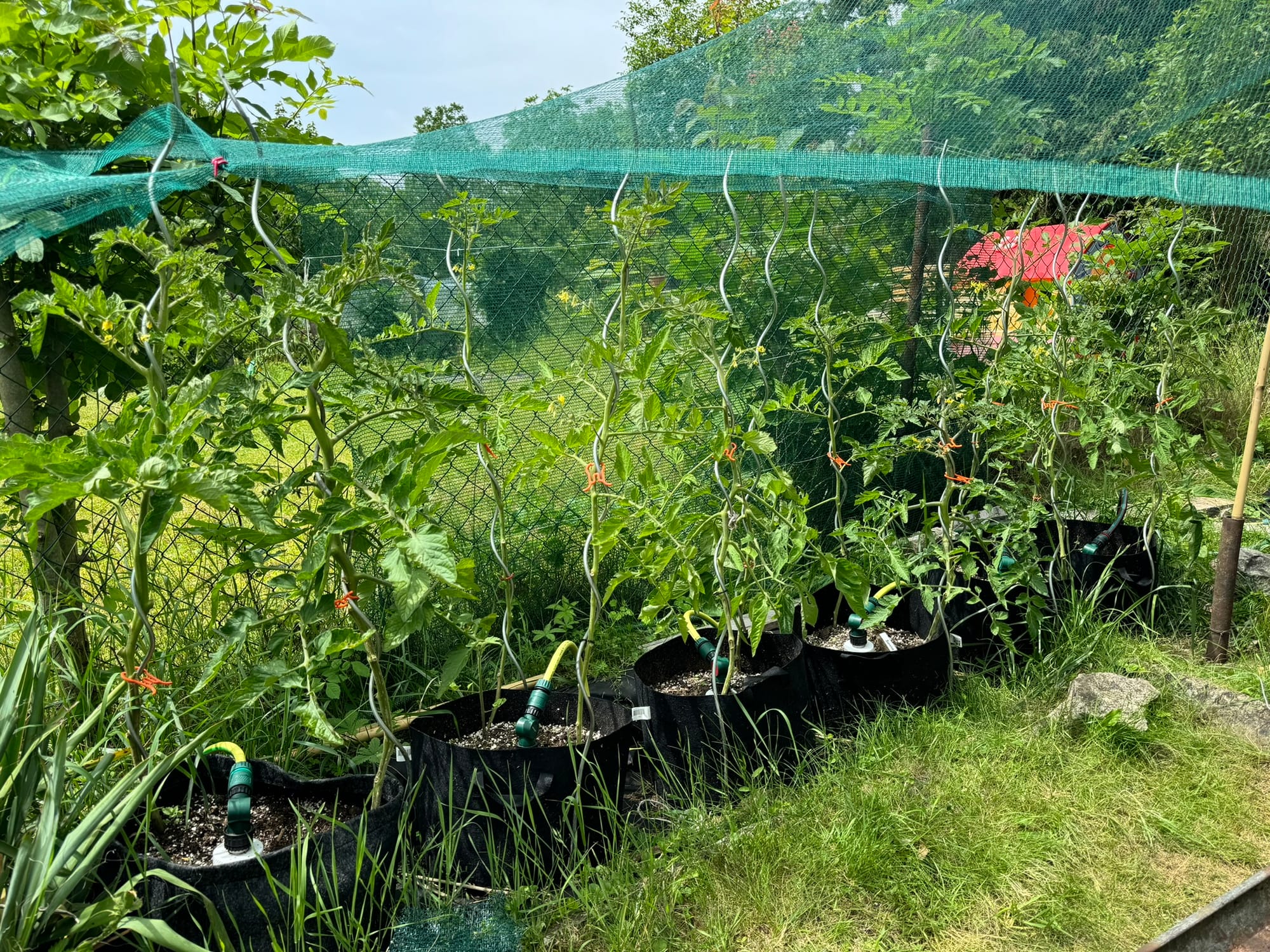
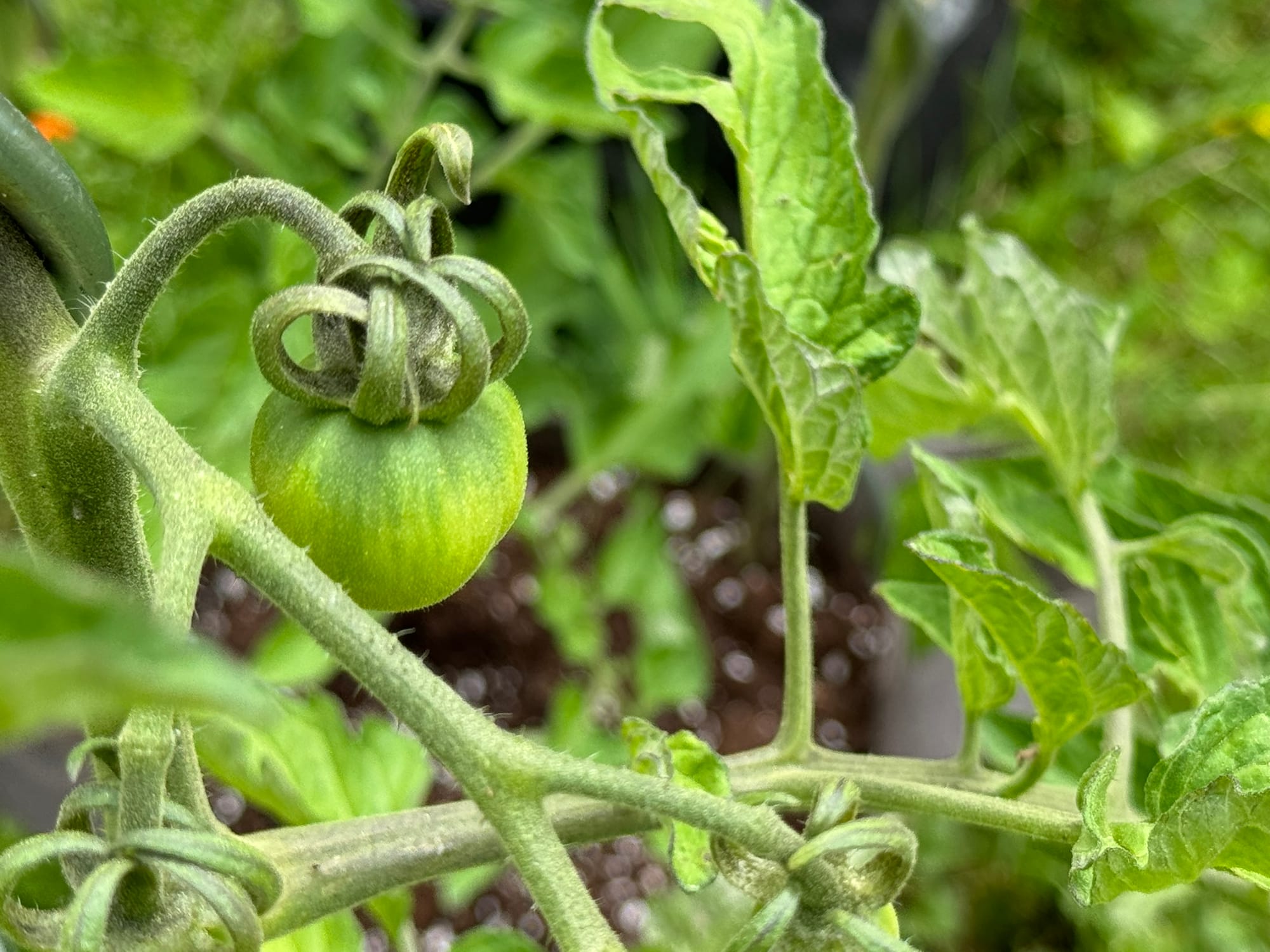
I regularly feed them with guano and spoil them with some natural supplements. I like to use granulated fertilizers because of their slow bioavailability. I usually sprinkle a handful of granules on top, leaving them to slowly dissolve and release nutrients over time.
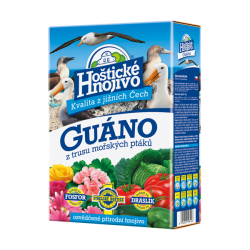
I expanded my hydroponic tomatoes by another four plants. As I predicted, all hydroponic plants surpassed the soil ones in growth in just a month in the vegetative stage. I built them a small trellis with two bamboo stakes, but I was a little bit afraid of overcrowding, so I split the trellis into two. I want to split those tomatoes into two groups: one group trellised to the stakes and the other group to my shed where I put a wire for them. This way, there should be enough sun and airflow for all of them, hopefully delaying the rot as long as possible. To be fair, last year the hydroponic tomatoes, even though they got the potato rot, managed to survive it.
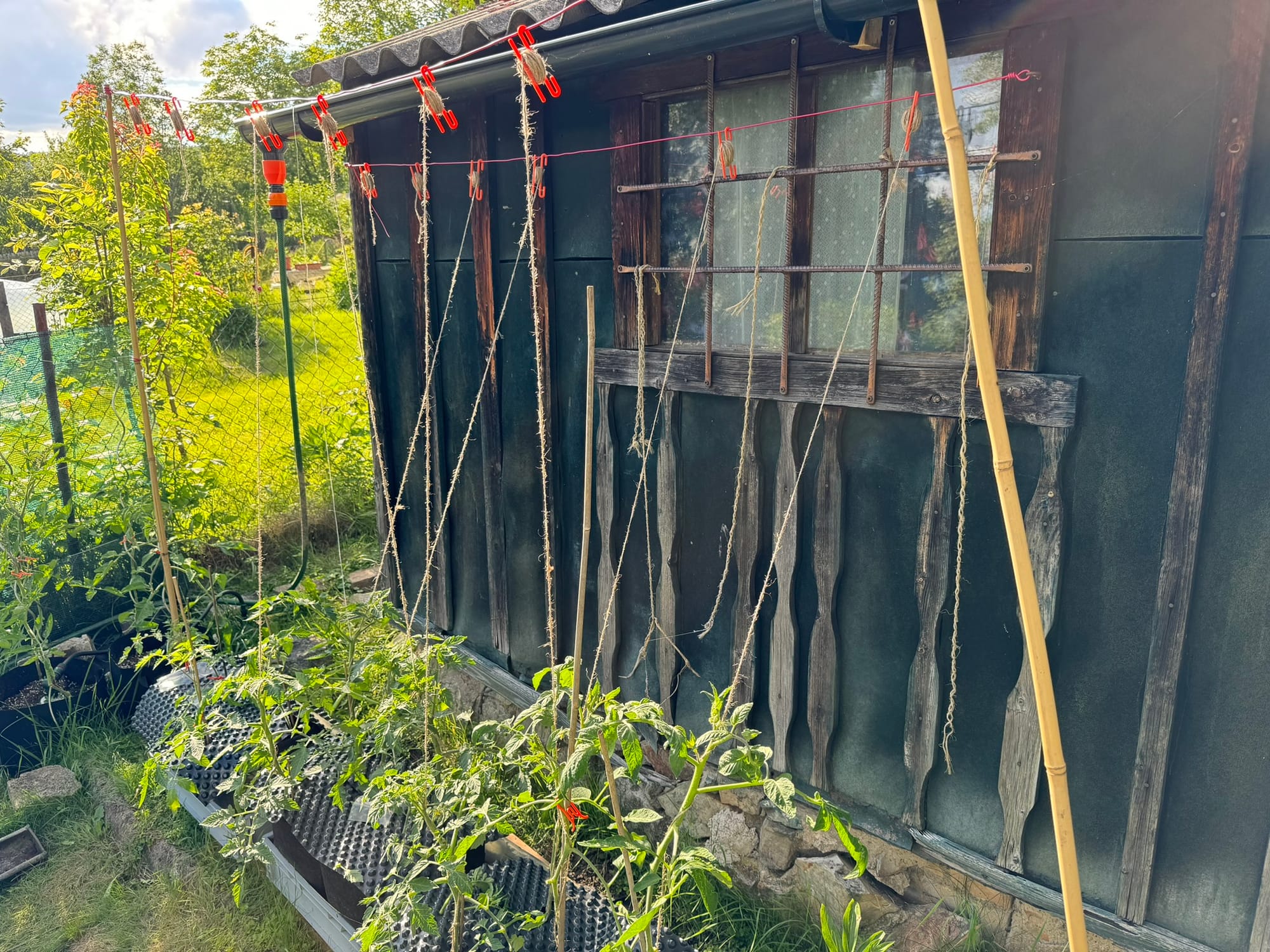
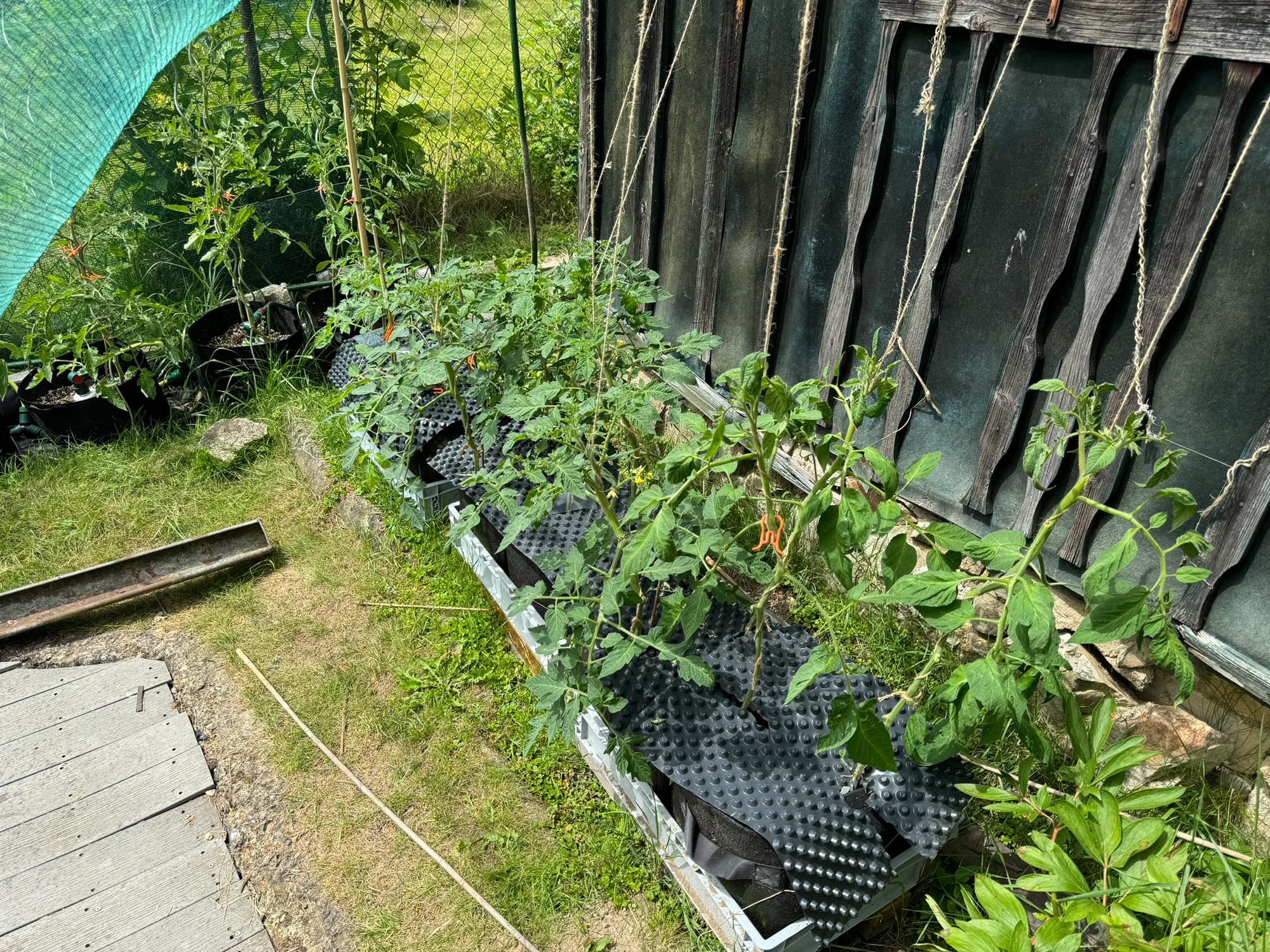
I have to confess, my pickling cucumbers are dead. I mismanaged the pest control and most of the seedlings were eaten by slugs. I had two options: sow a new batch or buy some. I caved and went to my cucumber guy and bought a few of them, putting them right in the field occupied by onions and garlic.
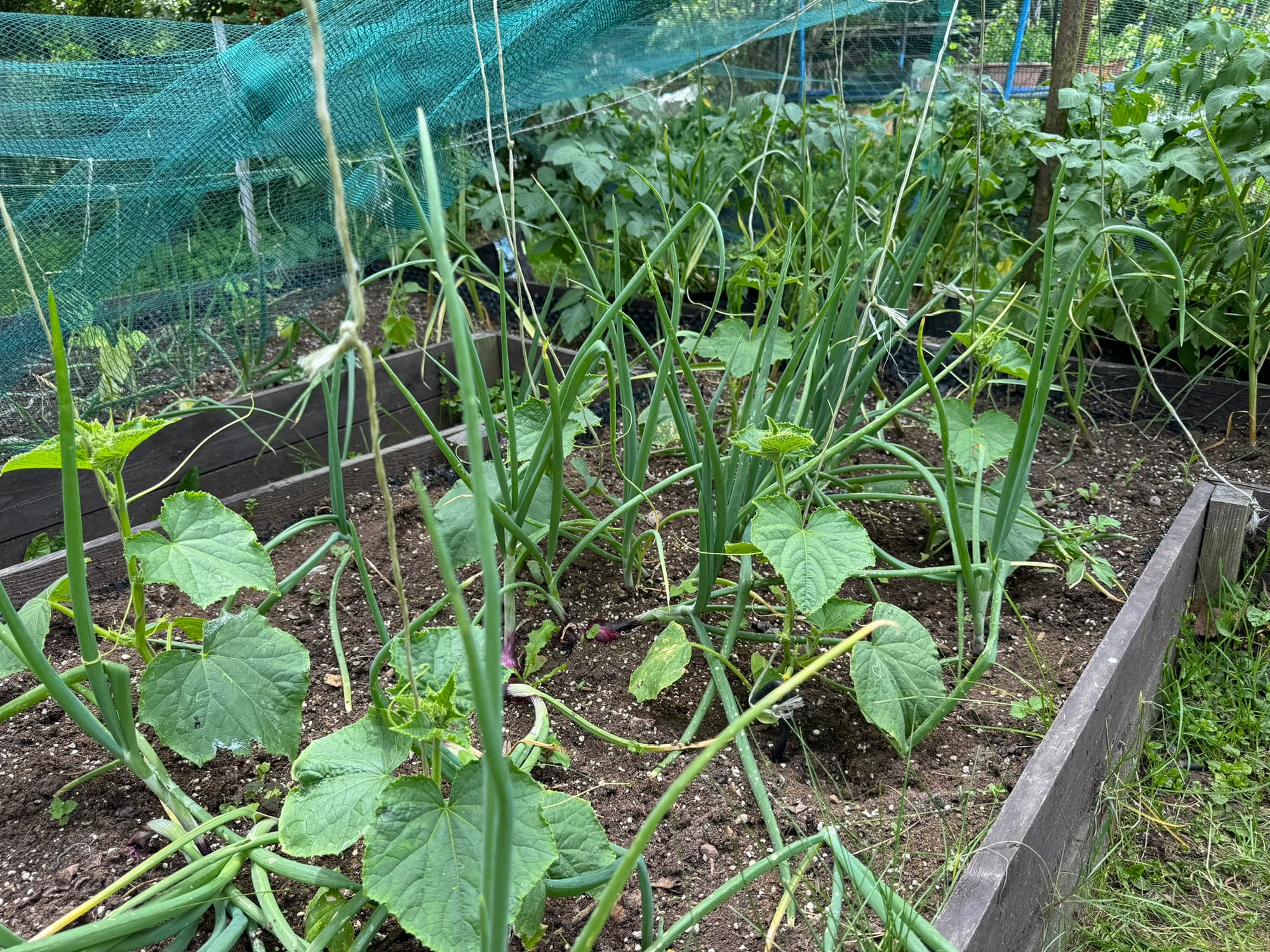
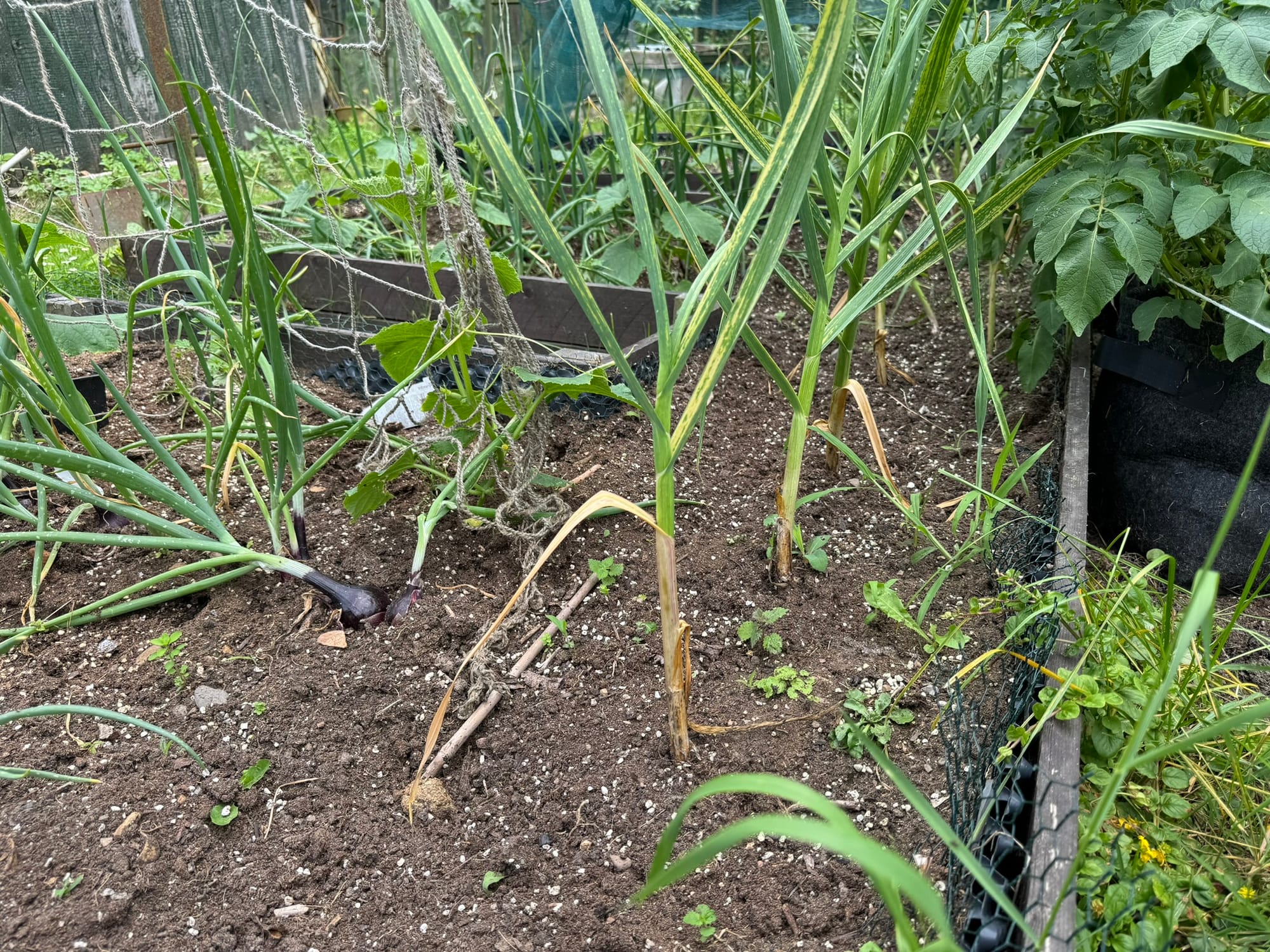
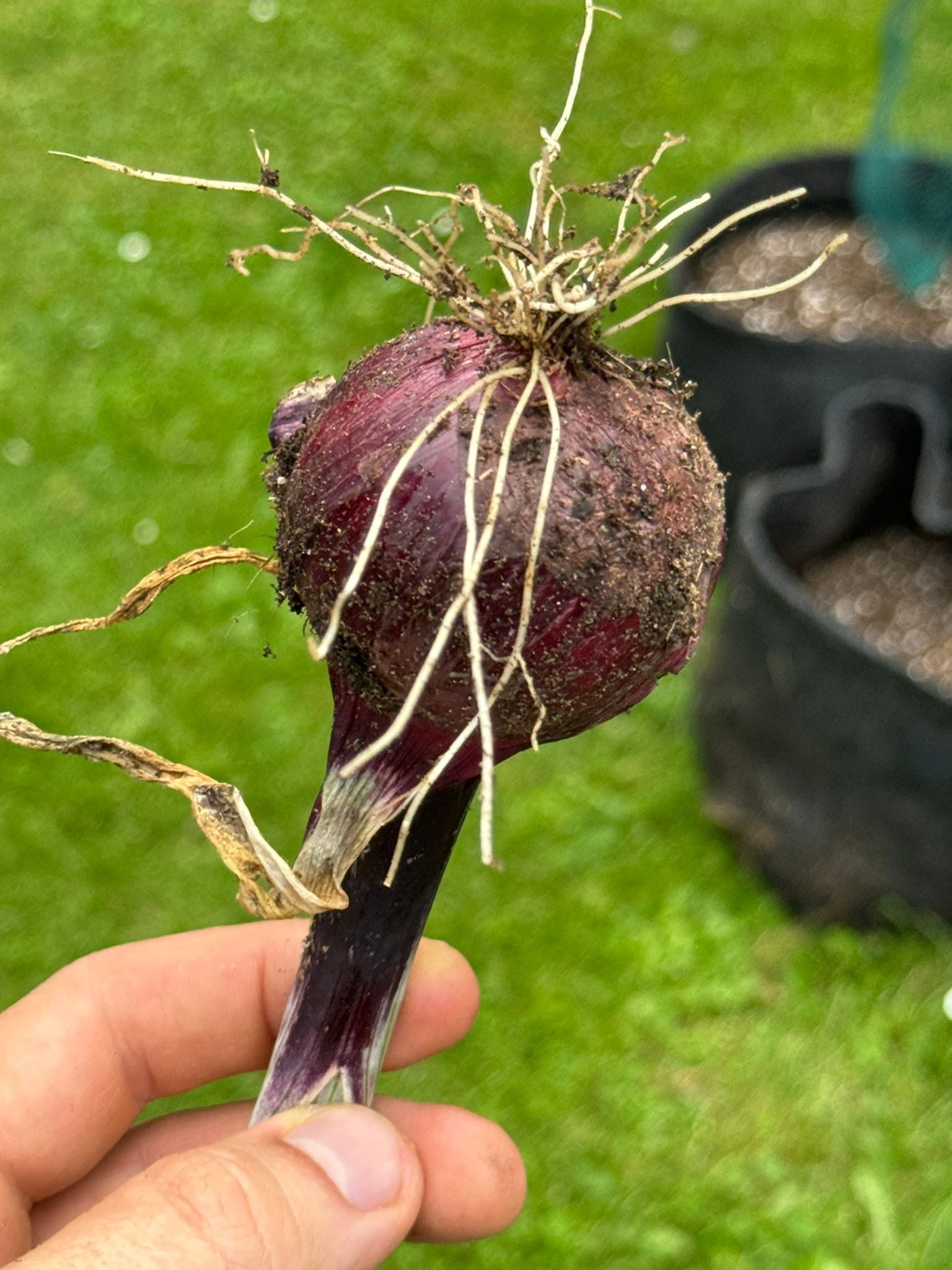
As you can see, the onions and garlic are entering the final stage of their life, and I was able to harvest a few onions already.
the Latvian joke
My potatoes have grown exponentially during this month. All of them are in full bloom at this point, and the early variety is ready for harvest. I’ve tried to collect a bunch of bags already, and I am happy with the yield. However, I am not exceptionally happy, but happy as it’s my first harvest and I don’t know what the average yield of this variety is in my general area. One bag is usually enough for two or three meals, but I also collect a lot of small beads that could go a little bit longer, so I’ve decided to leave them there, hoping they will grow a little bit larger.
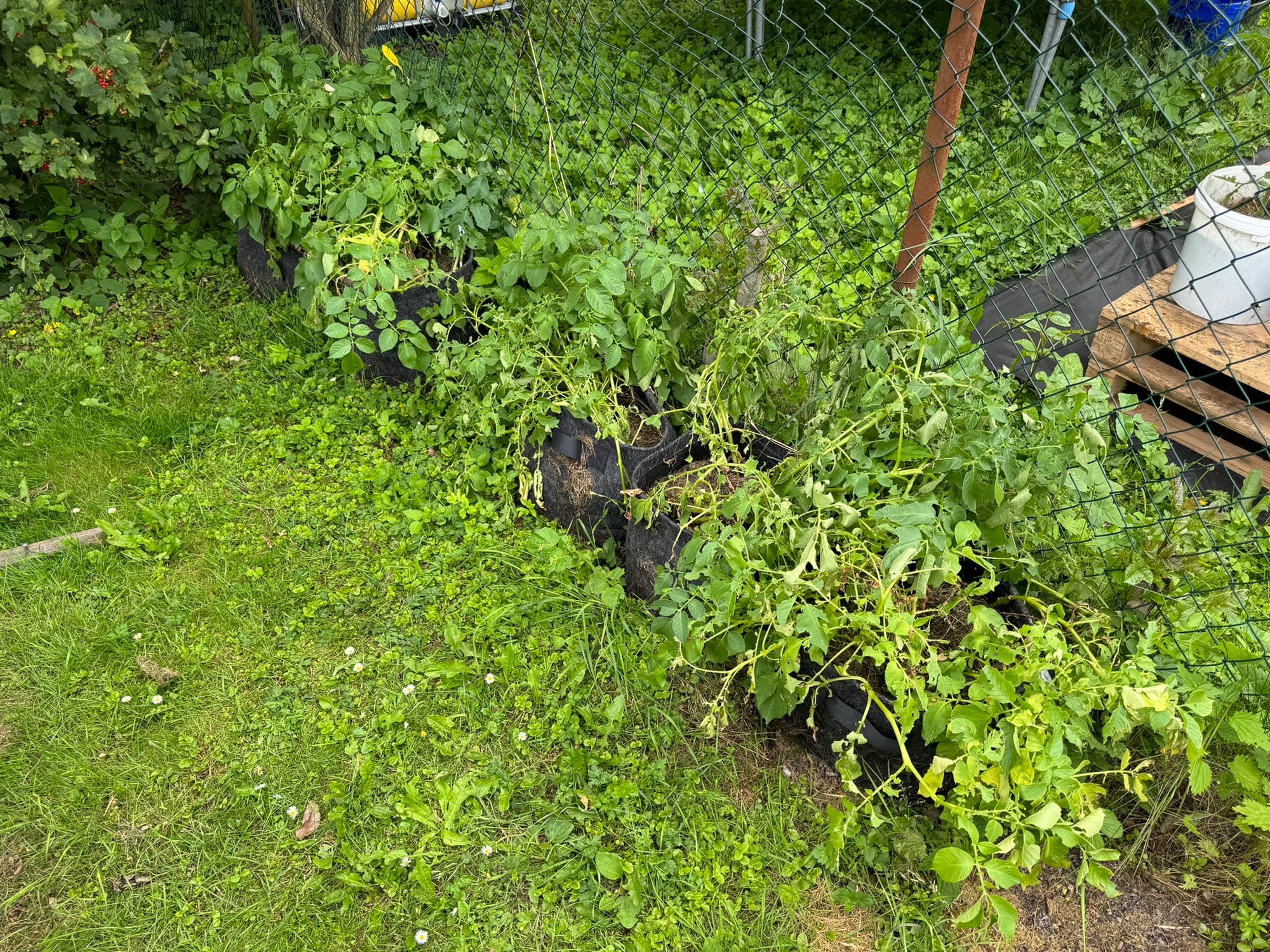
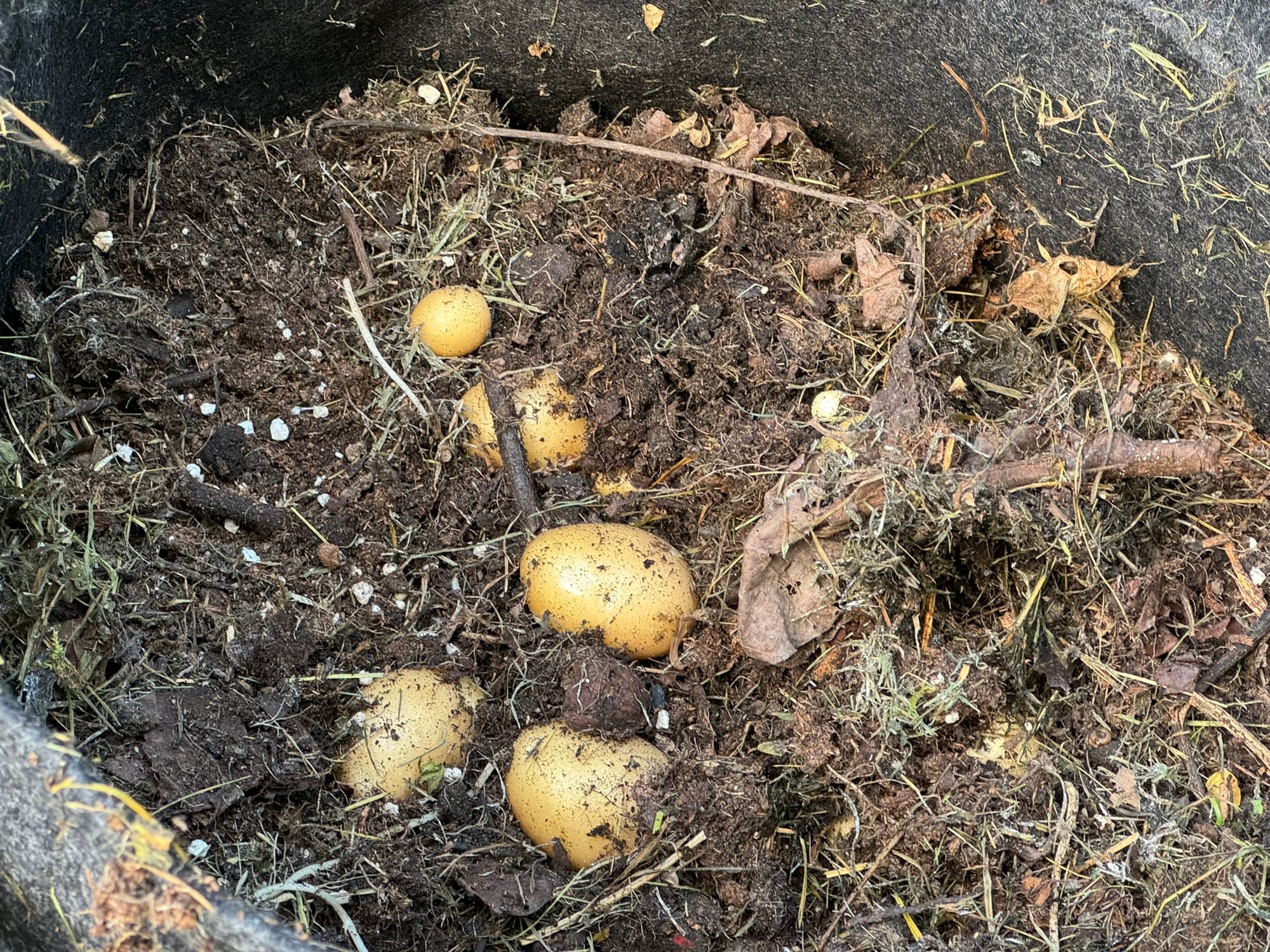
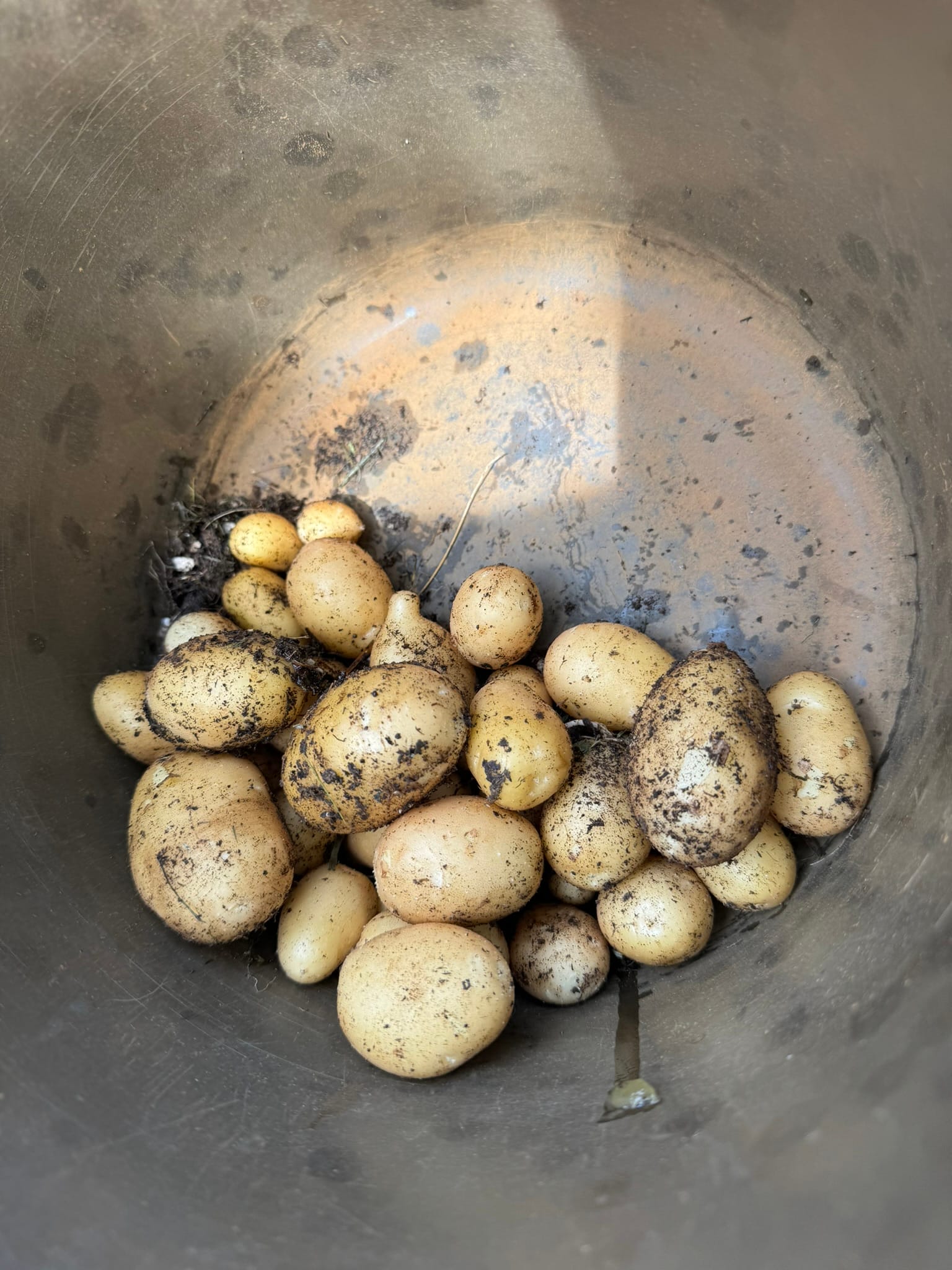
One bag worth of potatoes
The maincrop potatoes are much bigger than the early ones, and the plants overall look and feel more sturdy. The growth rate is, however, much slower. They are also more resilient to regular pest attacks.
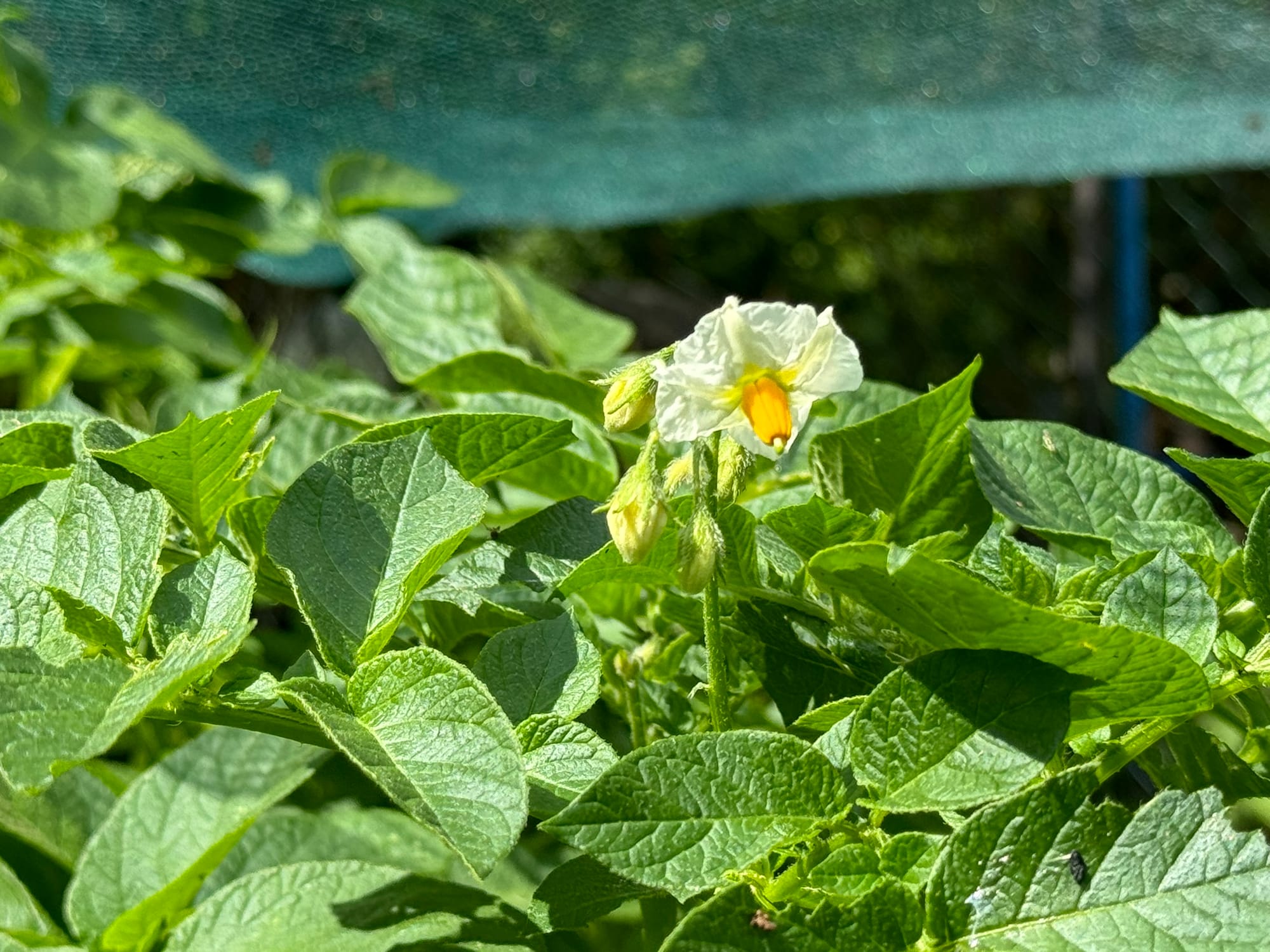
One very nice benefit of the method I chose to grow them is the amount of water they consume. It’s very little, and so far, I didn’t have to water them at all—only occasionally with some dissolved chicken poop for fertilization. The grass clippings I use as mulch keep the soil moist, which seems to be enough.
the outbreak
I had a disaster in the making waiting for me in the greenhouse at the beginning of the month. We had some rainy days, and the weather was just right for an outbreak. A small outbreak, but an outbreak nonetheless. My cucumbers in the greenhouse got mold. I successfully averted the mildew fungus, but in the meantime, a sneaky cucumber mold developed on basically all of my plants.
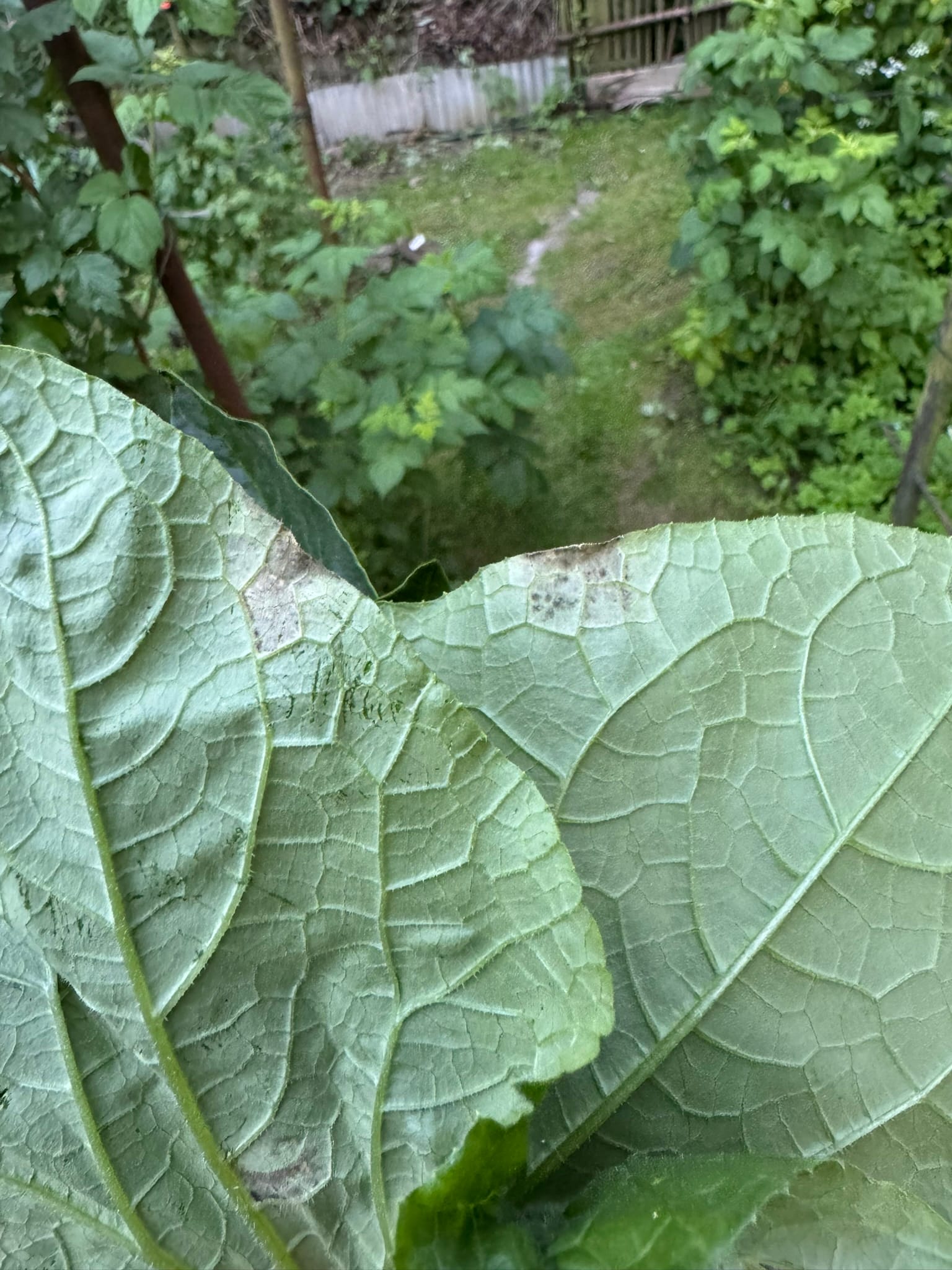
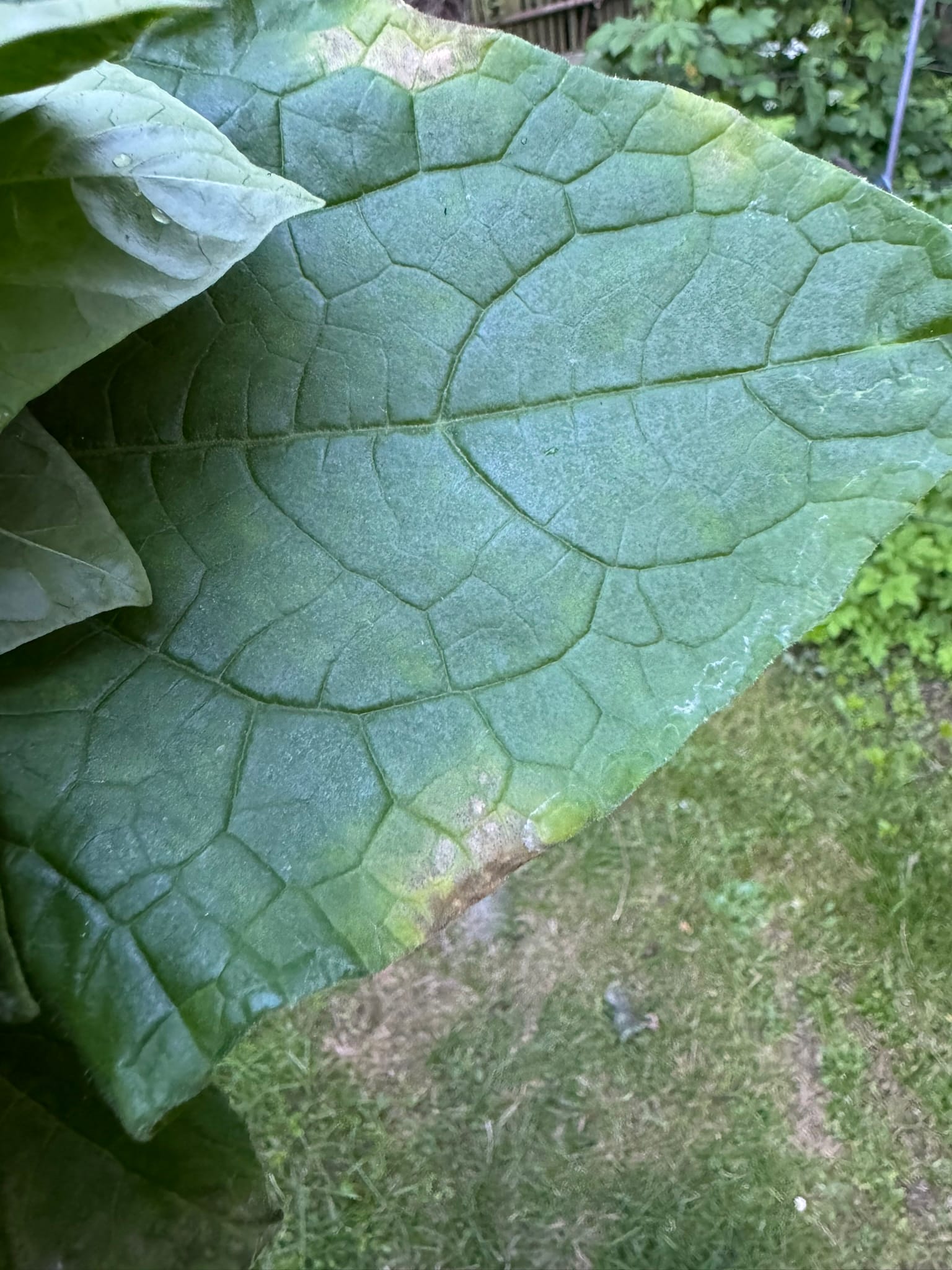
I tried to solve the issue by ripping off the affected leaves, hoping it would be enough to stop the spread, but the high humidity did its magic and kept the fungus alive. There was no other way. Time for deadly carcinogenic chemicals! I got my hands on the fungicide Magnicur Finito. The reviews were quite positive, and the application seemed easy enough not to mess up—foreshadowing!
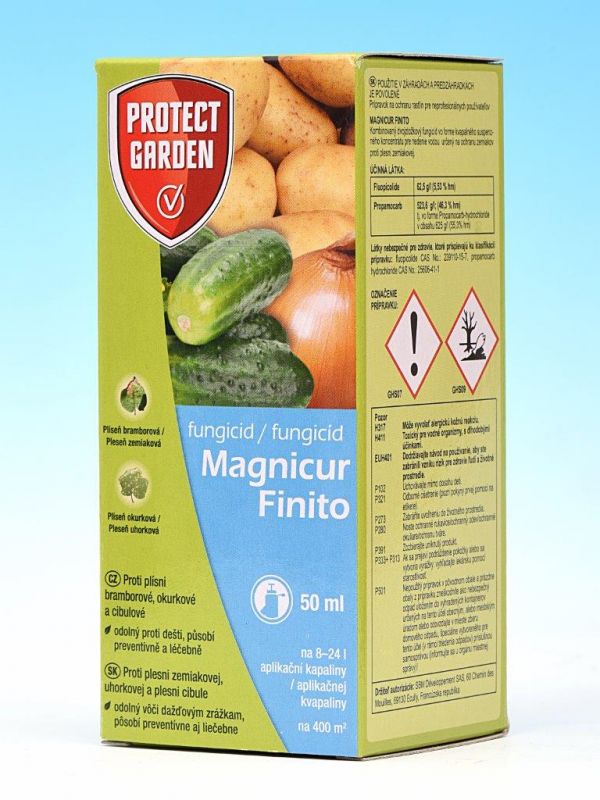
I mixed the fungicide with water; according to the dosage, you should use 16 mL for something like 2-6L of water, but the only empty sprayer I have is this IKEA 500ml one. So, I did a quick calculation and prepared the solution. I treated all my cucumbers thoroughly with extra care for the lower side. I really paid attention to the application. If only I had paid enough attention to the bottom of the sprayer flask saying it’s not 500mL but 350mL. Yeah, I literally burned the mold out. But it worked! The mold is gone, hopefully.
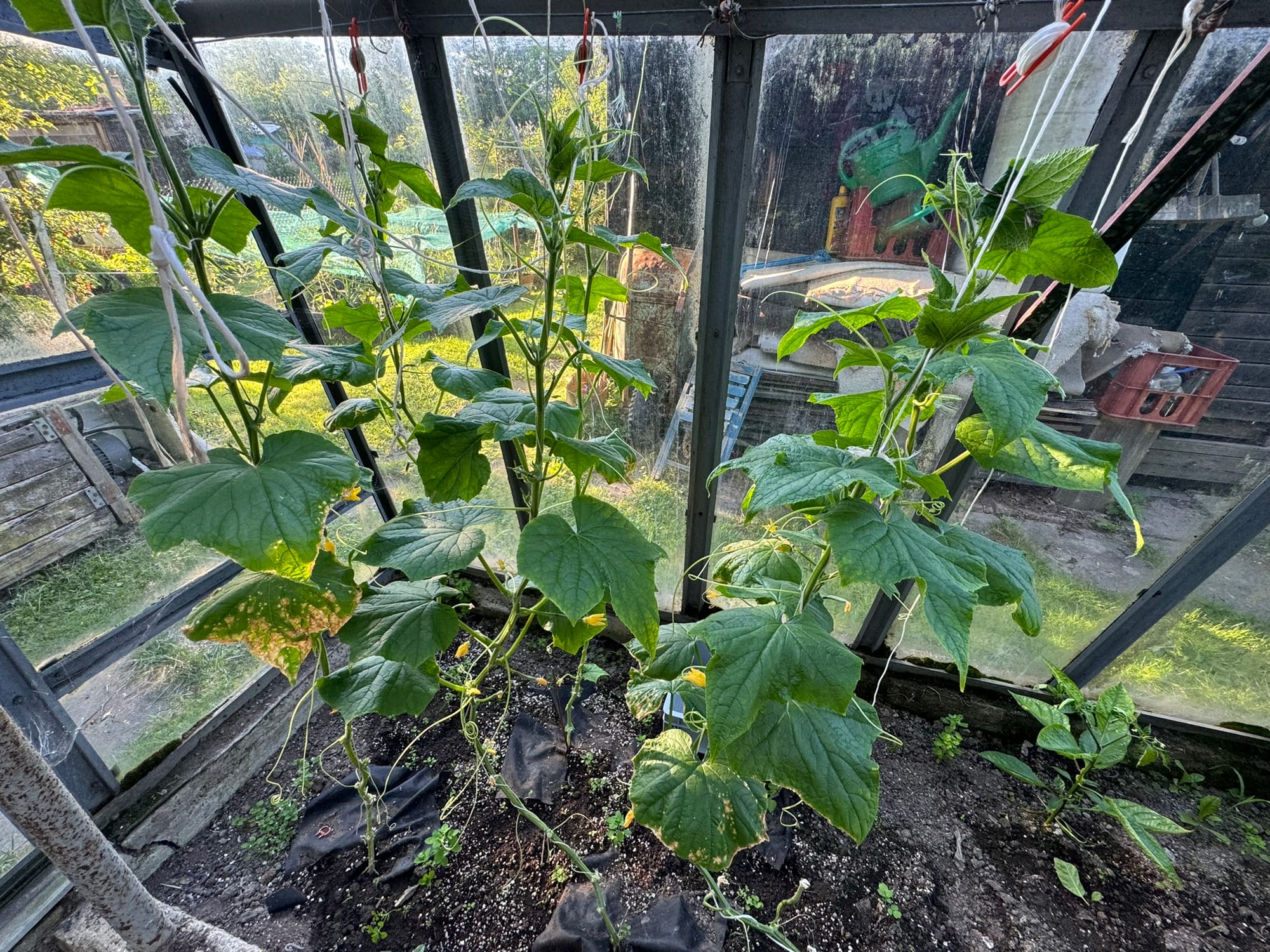
I’ve also decided to try something new and discovered this novel method of cucumber growing. Cucumbers grow like vines. Throughout the lifespan of the cucumber, you have to trim, prune, and support the plant as it occupies a large space. But what if you didn’t have to? You can grow the plant vertically, trellising it to a string, and when it reaches the top, you can simply lower the plant and coil up the stem. This, in theory, provides better conditions for the plant. As you are removing the old stem and leaves from the space, you are also removing a ground for mold and disease. New leaves and tops are always exposed to the best light and airflow. You can take this one step further by replacing the main top with one of the shoots by simply snipping the main top and letting the topmost offshoot grow.
From a material perspective, you don’t need anything special for this method. Just a bunch of strings and some tool to keep the string spooled. I’ve decided to design my own hook to hold the spool, which I also used for trellising my hydroponic tomatoes. So, let’s see how this experiment turns out.
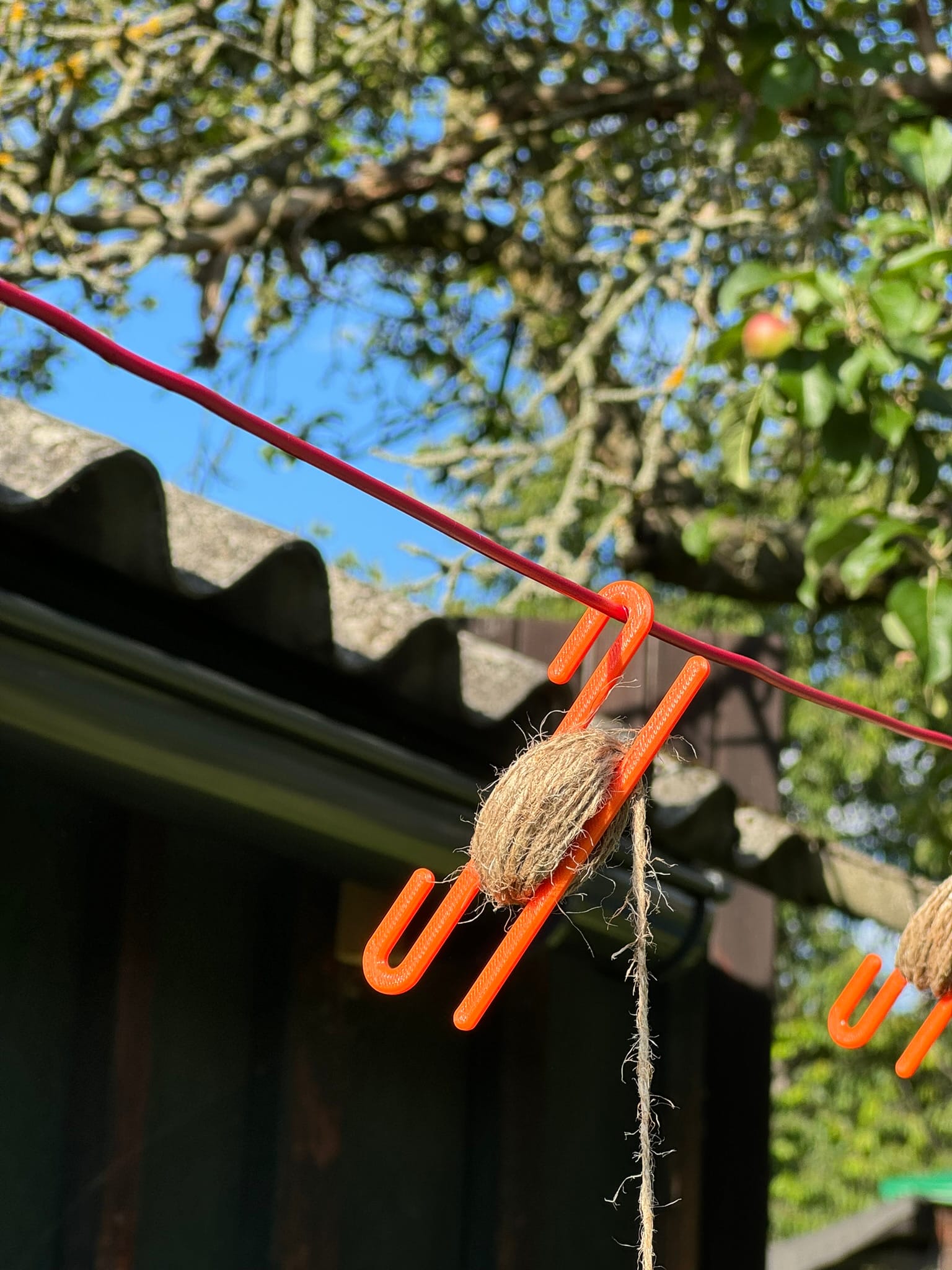
This year, I feel like my peppers are something like a month and a half ahead due to the weather and the early sowing. Many of my plants, especially the bell peppers, are producing fruits, and all of them are putting on quite a lot of flowers. Two plants are exhibiting some sort of nutrient deficiency or deformation, and one plant was briefly attacked by aphids. Nothing a swift genocide couldn’t solve. I feed them liquid fertilizer every week, and I double the dosage for the plant with very pale leaves but nothing else. I quickly checked the irrigation wick from the water box and was quite happy to see a lot of roots tangled in it. I can’t wait to dig it out at the end of the season to see the roots. I am currently working on an updated design with a different float valve for the pumpkin beds as the day of my vacation approaches. These plants have to survive some neglect for almost three weeks.
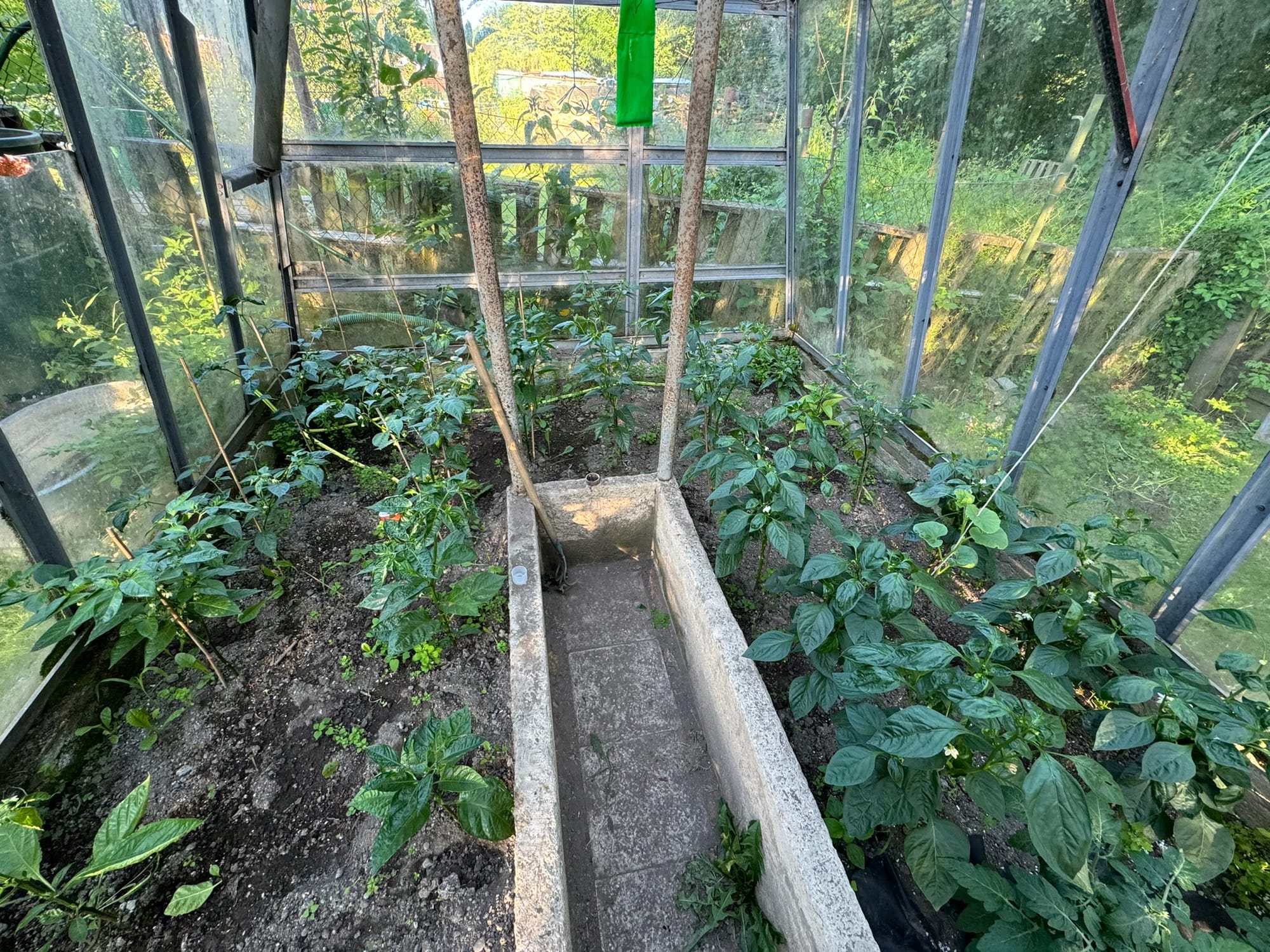
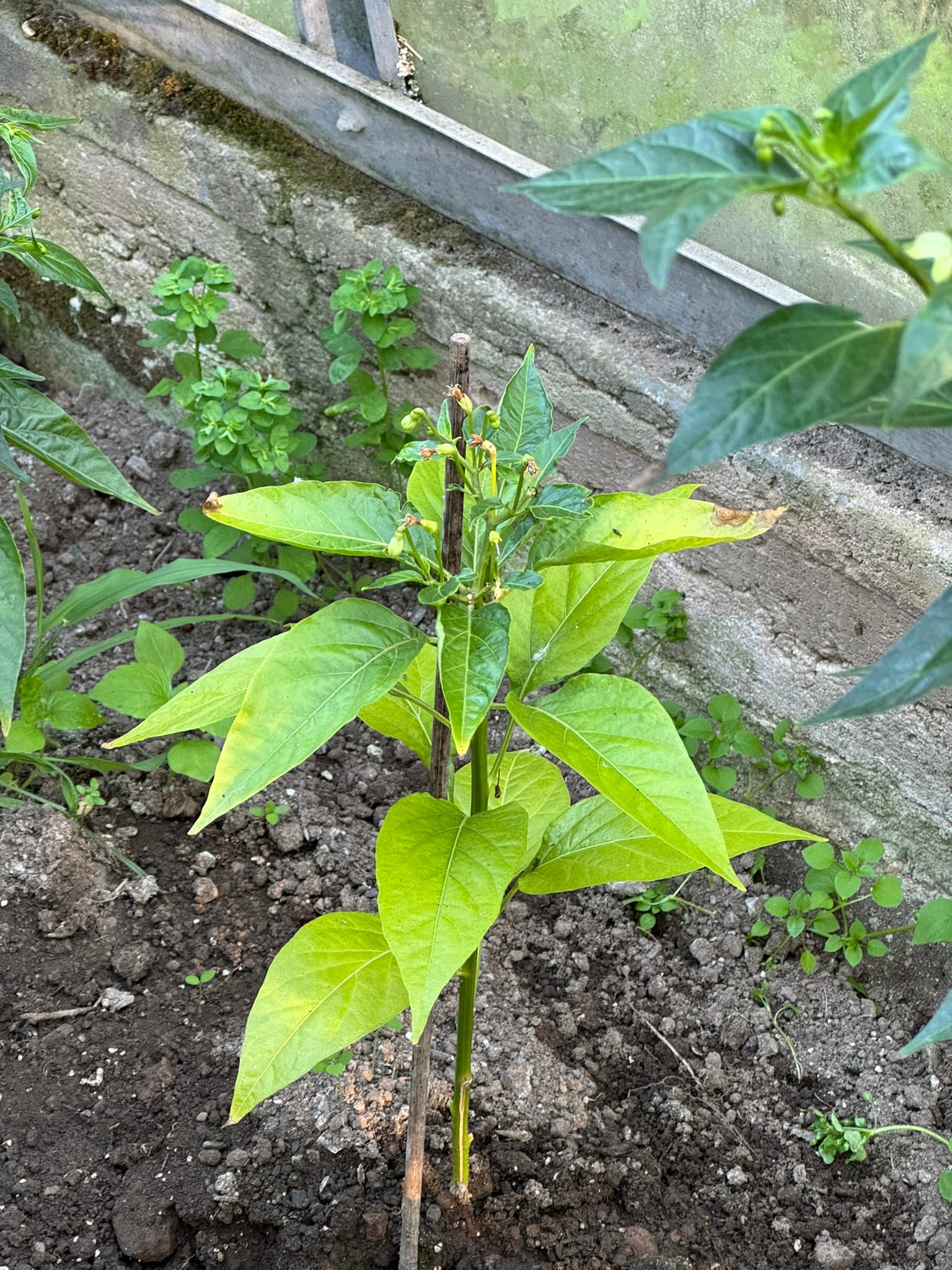
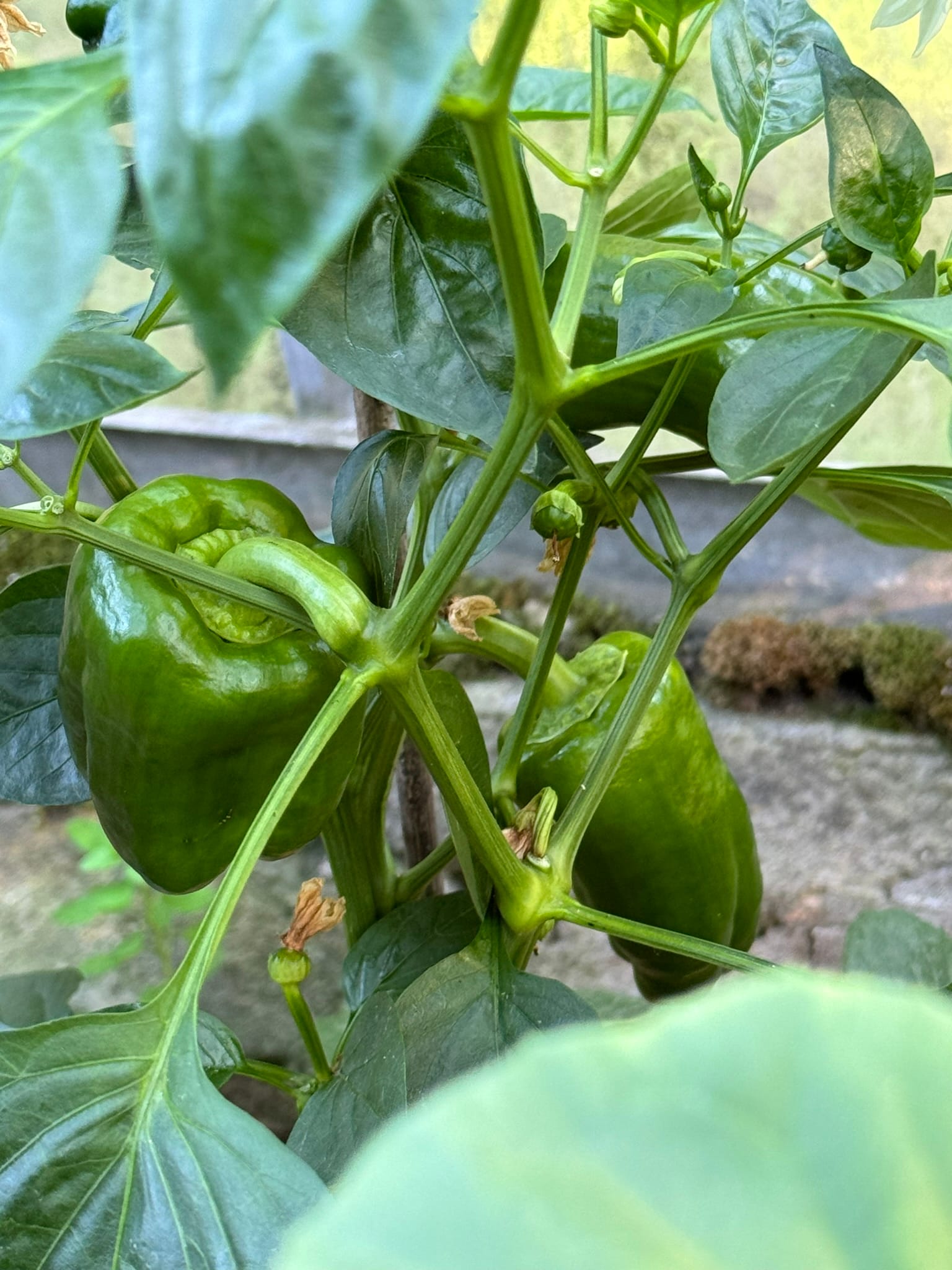
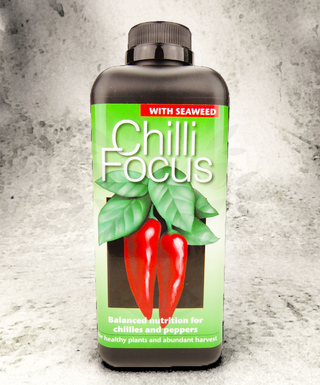
And now, the crown jewel of the greenhouse area—Red Robin tomatoes! They are bushier, healthier, and produce more flowers and fruits than last year. Very beautiful plants once again, surprising me with everything. They are so bushy I will have to prune and trim them a little bit soon because the foliage is out of hand! There is no nutrient deficiency, not even a sign of any pest or disease, and they are so cute!
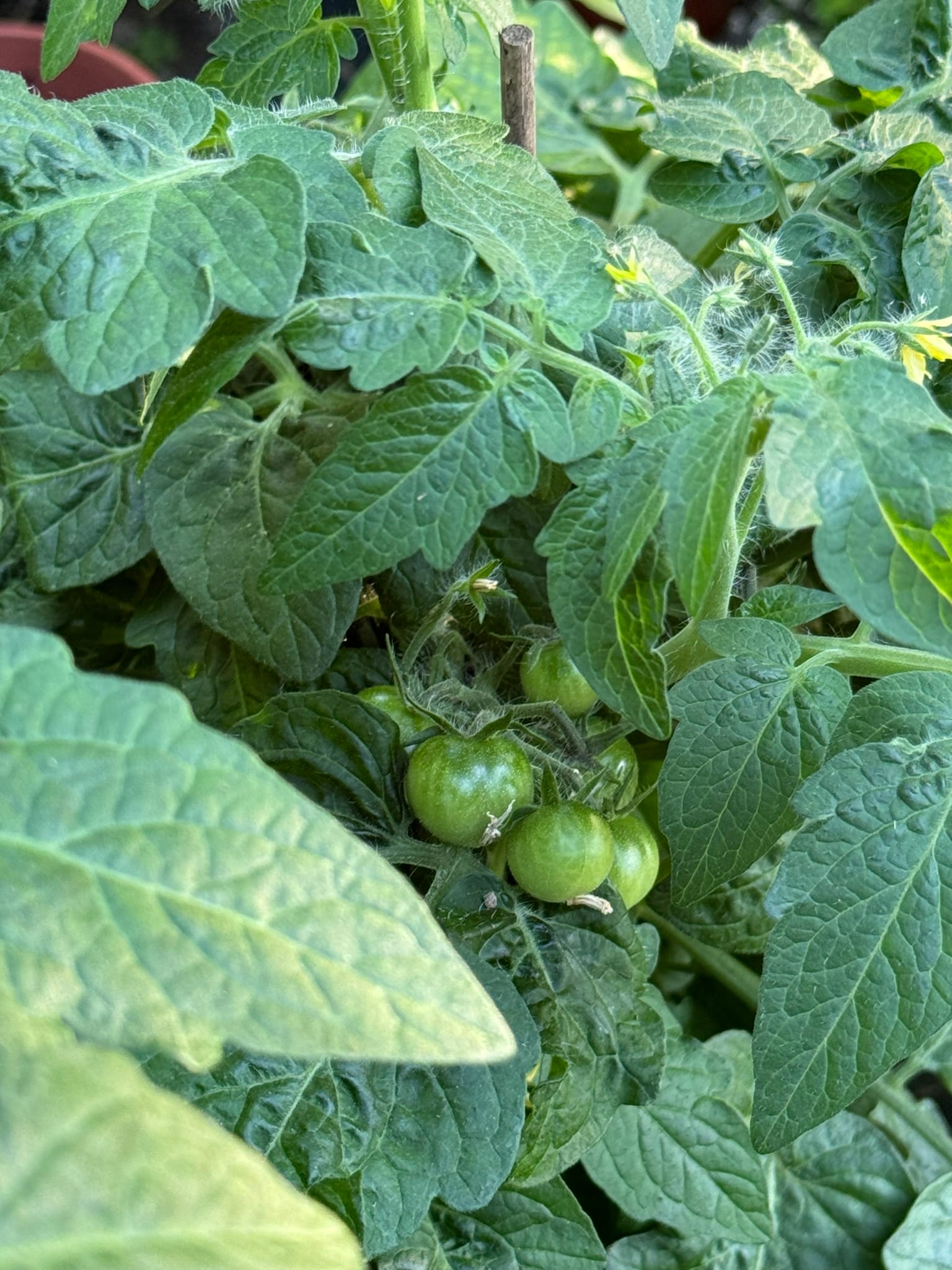
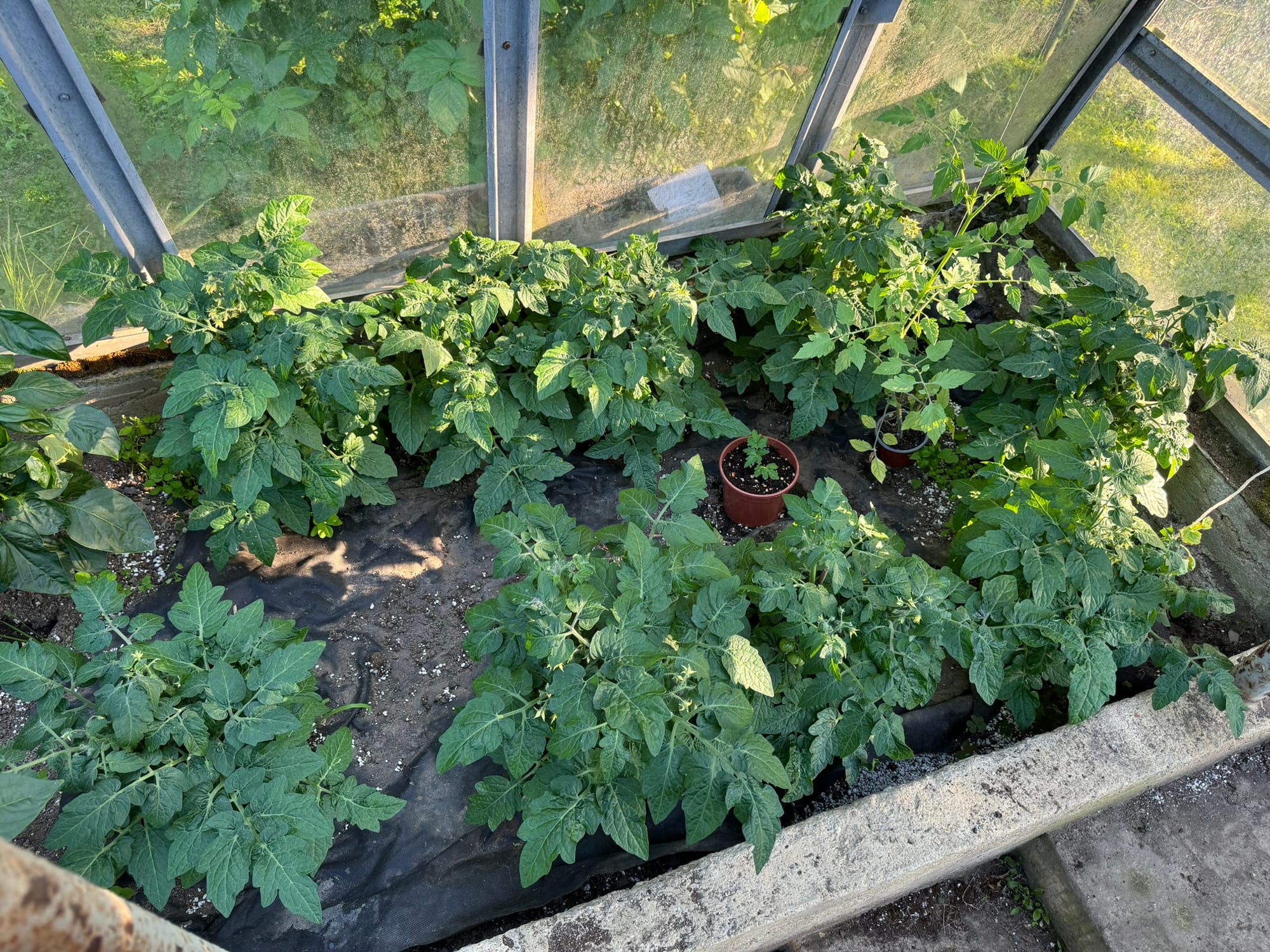
As of writing this post, we have yet another severe weather warning with heavy thunderstorms. I hope there will be something to write about next month other than disaster recovery. It's getting really annoying.
Member discussion